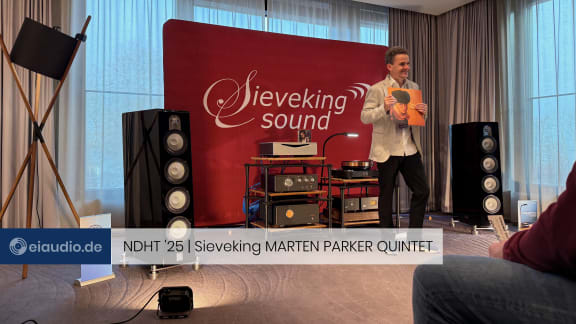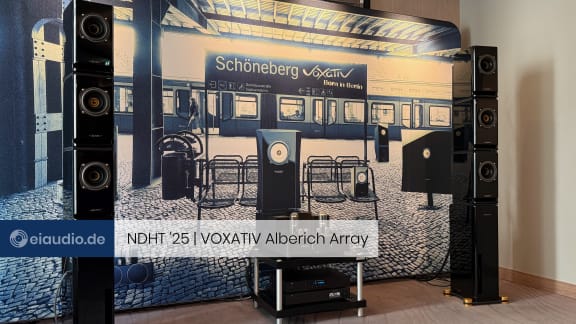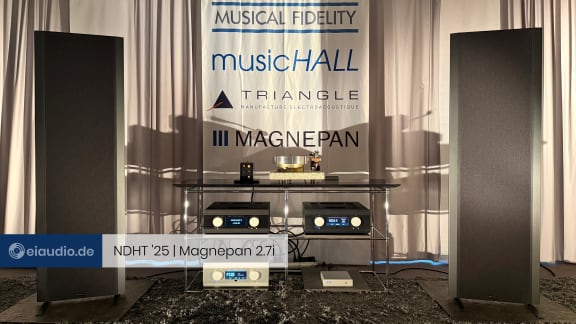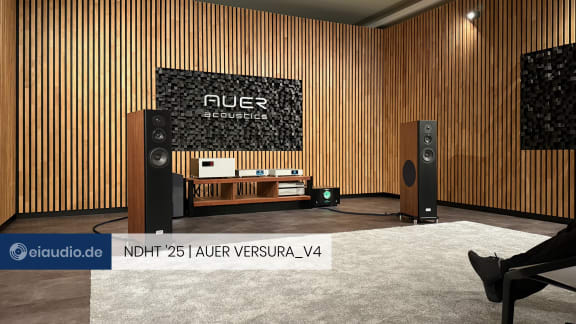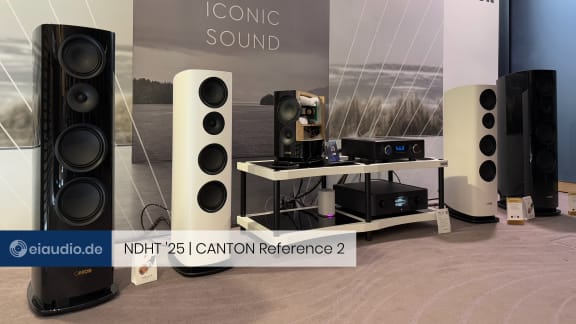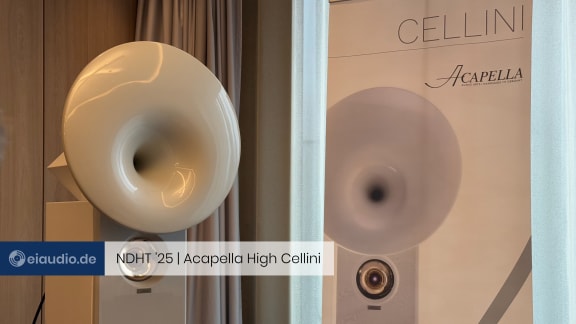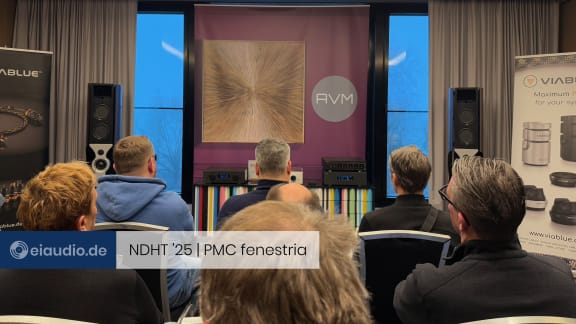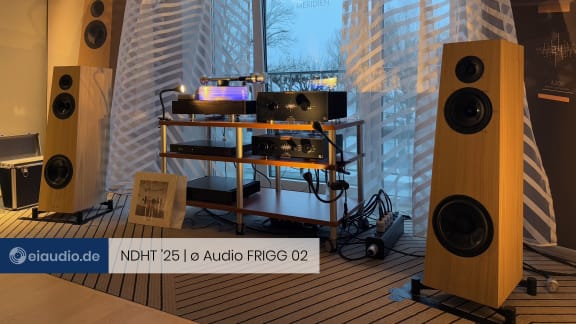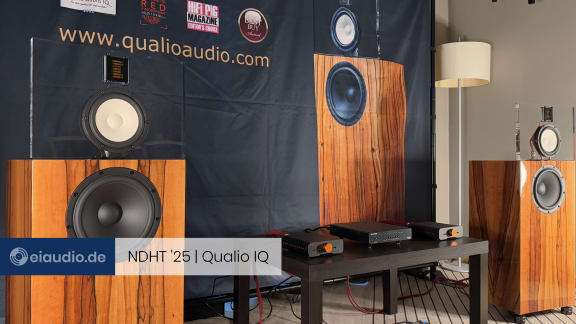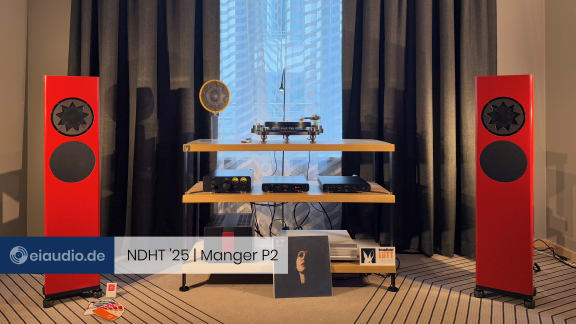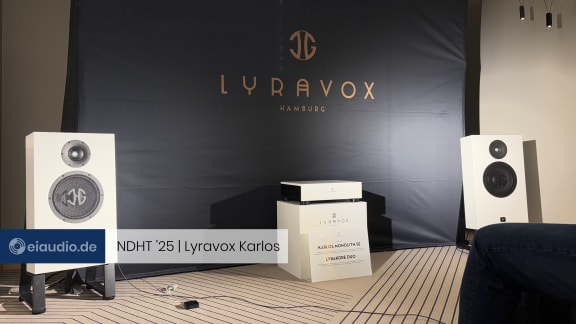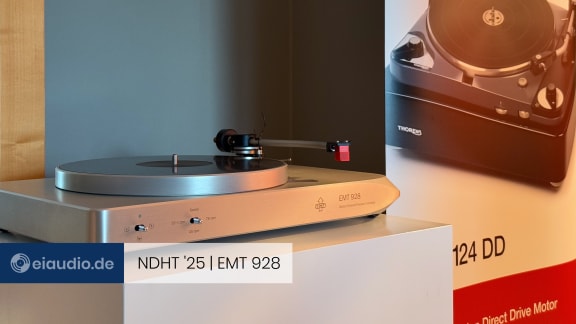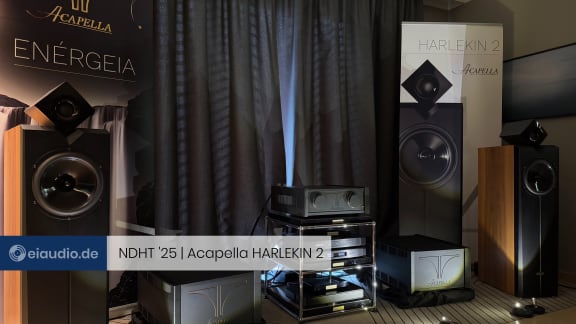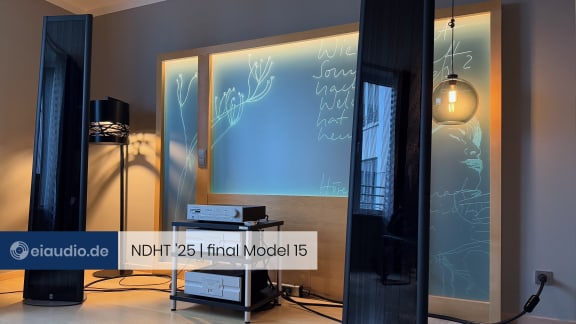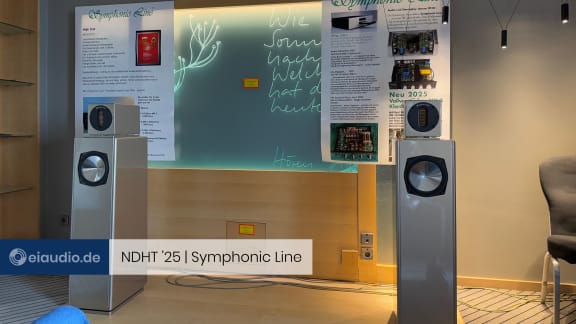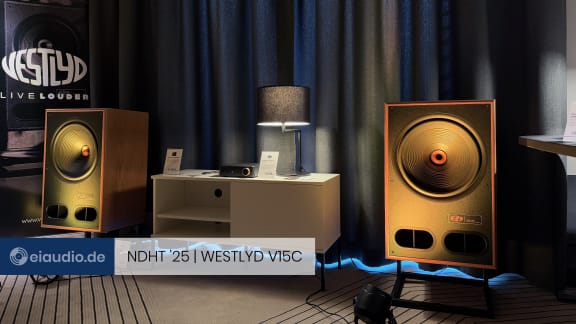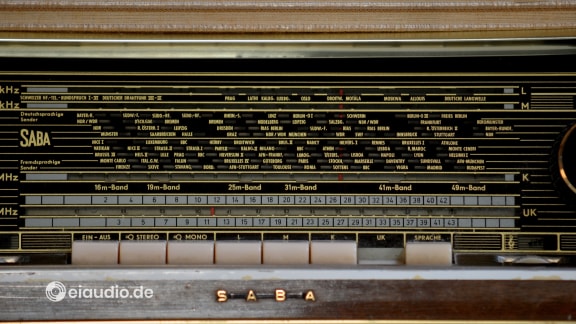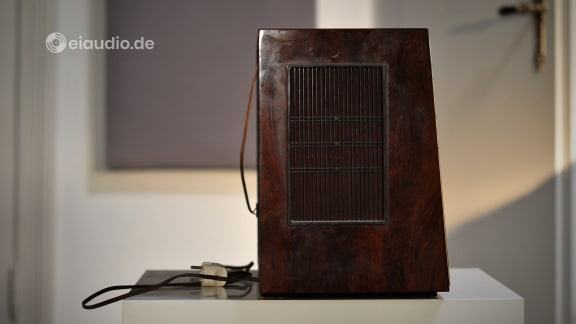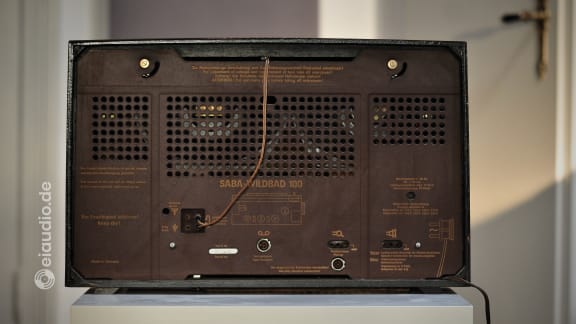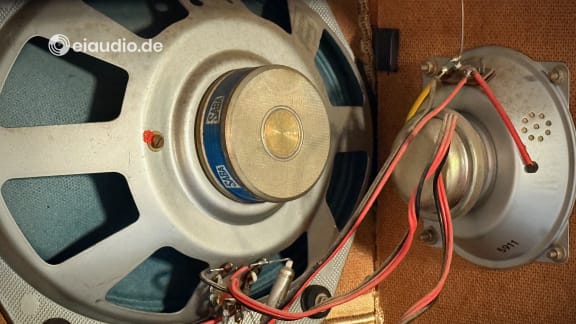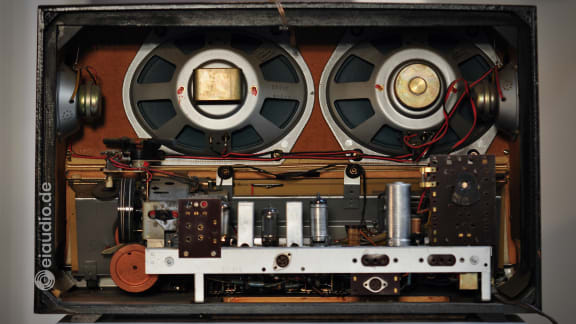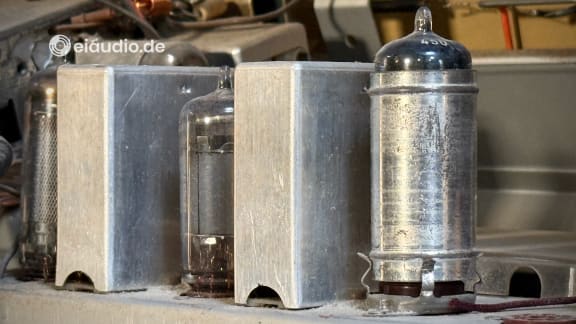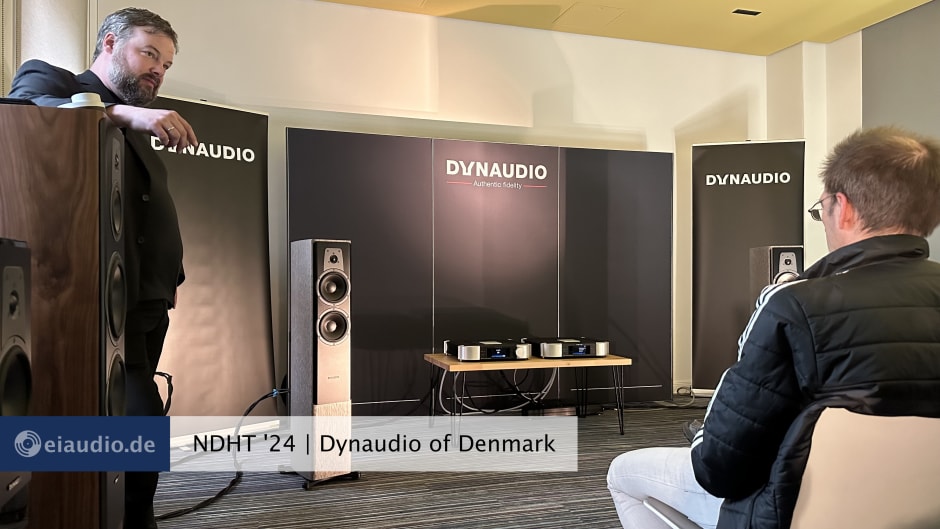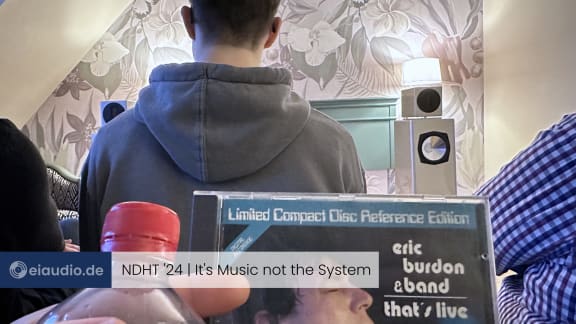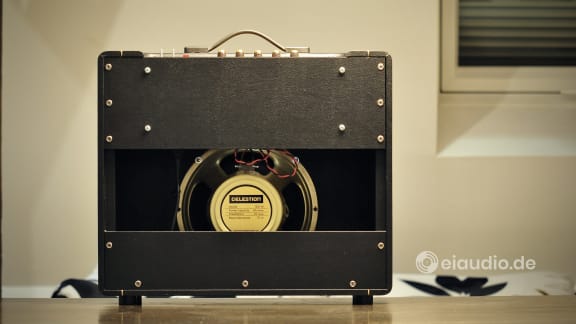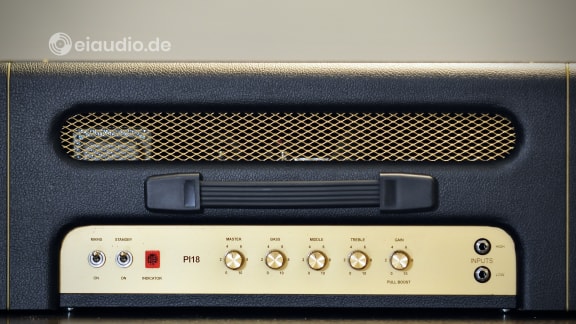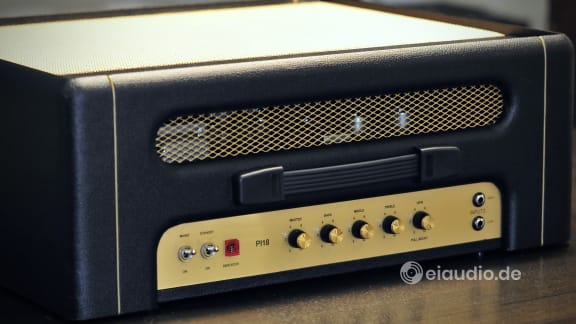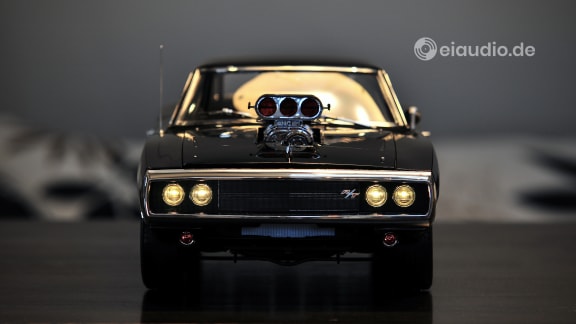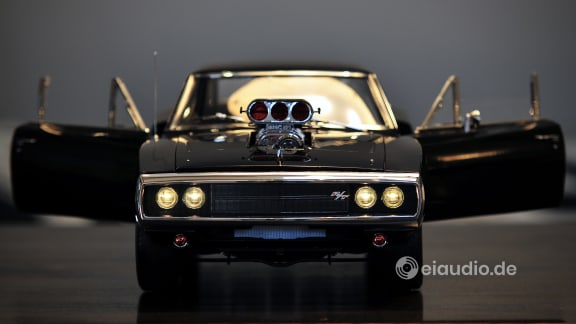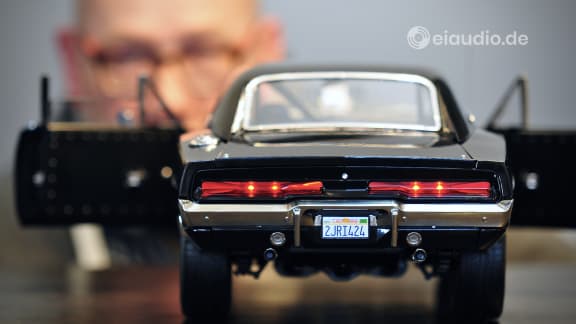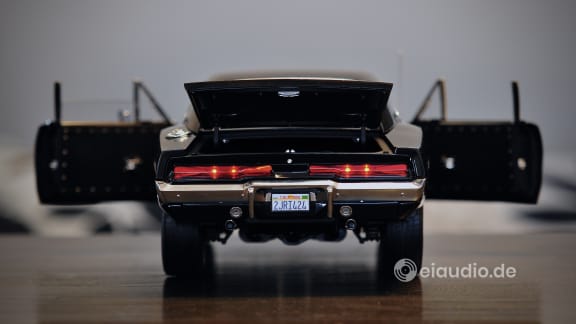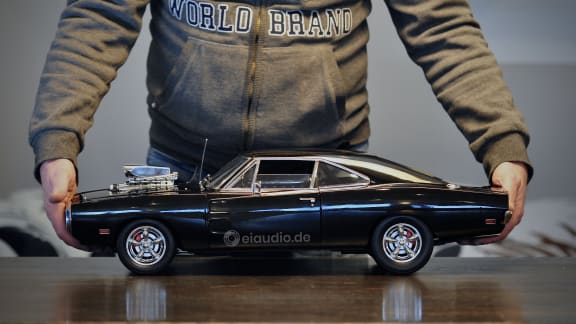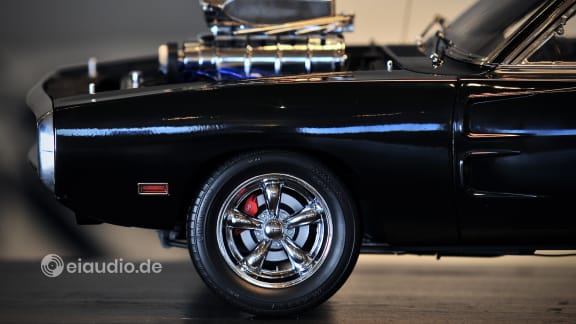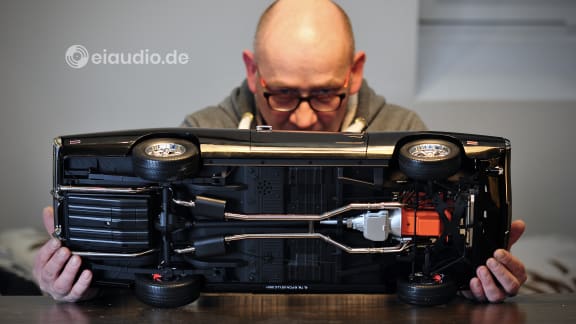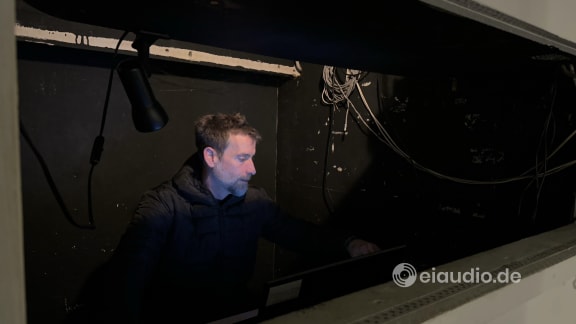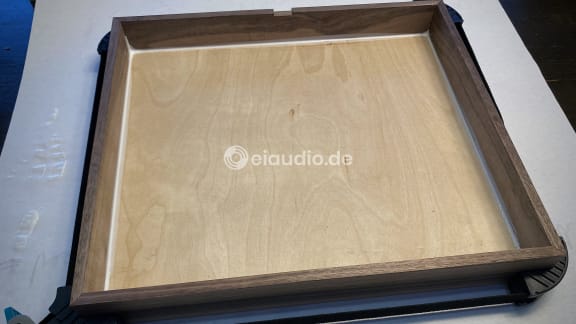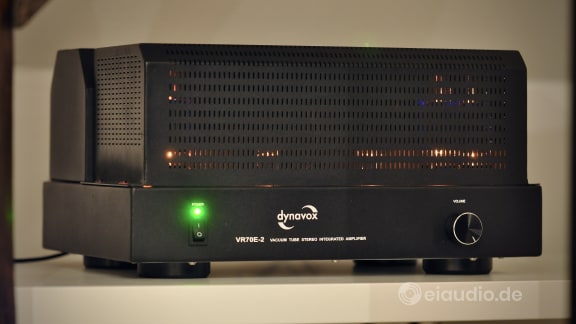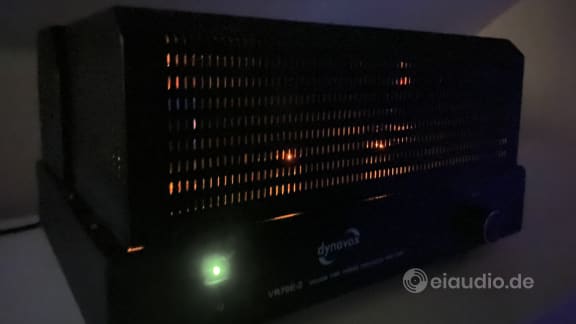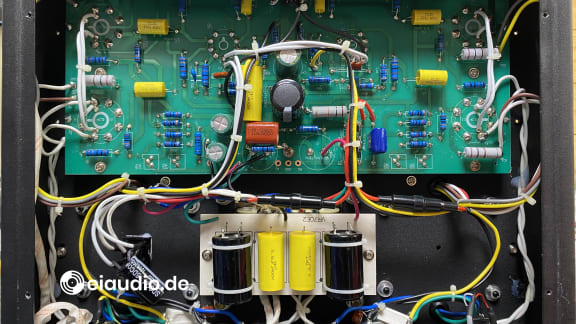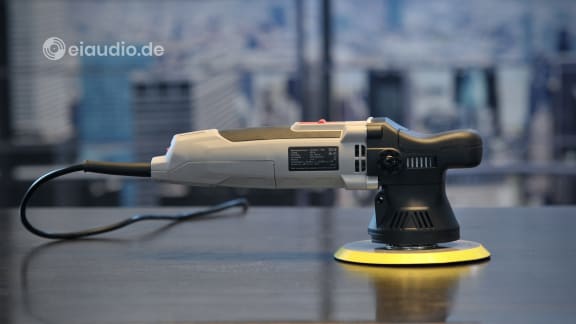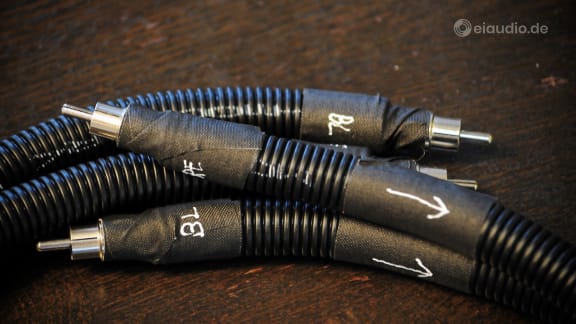Music & Talk
How to connect the audiophile with the artist?
Getting started in audiophile music usually presents quite a challenge, because, at the very beginning, nothing is fixed. From the energy to feed the system, via the components chosen and the room they are placed in, right to the source of the music itself, everything is either in doubt or in flux. In such a listening scenario, even great recordings may go unnoticed, while others may appear to sound ‘great’ due to their ability to cut through the haze. The more obstacles we remove, the more exceptional recordings will be able to stand out from the rest. But even then, buying music on vinyl is a bit of a gamble, because so much of the sound depends on the mastering and pressing of the record. In the ‘Music’ part of this section, I aim to provide some basic pointers to help you navigate this terrain.
The ‘Talk’ aspect of this section is to provide you with unusual perspectives from collectors and performers, for us to explore the relationship between the creation of a sound event to the re-creation of this event in our living rooms. Interestingly enough, creators of music do not necessarily have a strong interest in High Fidelity or even highly sensitive hearing. At the same time, audiophile listeners very often have absolutely no clue about the artistic side of the process or the ability to play an instrument. Bringing the two sides together and leading them towards mutual understanding and appreciation may help all of us in raising the bar of what is technically possible today.
Audiophile Music
Sean Keel, A Dry Scary Blue

In spring 2024, I invited my friend and fellow audiophile, Arndt Scheuren, over to our studio to audition a new HiFi setup. For his own orientation, Arndt brought along a CD from a little-known artist and asked me to play it on the Marantz CD17. What happened next was truly amazing: Arndt, who knew the CD recording, was perplexed by the extent of musical detail revealed by the Martin Logan electrostatic speakers, and I, who was familiar with the usual sound of my system, was flummoxed by the haunting proximity of singer-songwriter Sean Keel’s broken voice. This did address my nervous system in a most stirring fashion: Never before had vocals sounded so wise and plaintive, so intimate and breath-taking, so powerful and frail to me—all at the same time.
Taken aback by this unfamiliar transformation and looking for confirmation that what we were experiencing was real, Arndt and I took turns, directing each other to sit in the sweet spot of the stereo triangle where the perfectly aligned running times of the dipole speakers beamed the singer and instruments into the room in lifelike fashion. Considering that Arndt and I were by no means new to this field, had listened to a wide range of HiFi setups and bought audiophile albums from various artists, our sudden exhilaration came as a surprise to us. What was it that made this album stand out from all the others we had heard, especially when presented on such a revealing HiFi setup? I just had to find out firsthand and decided to contact Sean Keel directly.
The eiaudio blog has a section called “Music & Talk”, which is to bridge the existing gap between the artist and the audiophile community by creating awareness for each other. This gap is real, because most musicians derive their joy from performing their songs and playing their instruments well. In their performances, they worry about singing in tune, knowing their instruments, and controlling their voices. Hence, this is also where their focus lies when they listen to a recording of their music. This, however, is quite different from the criteria audiophiles listen for when they evaluate the merits of a recording. I was quite sure that this would be no different in Sean Keel’s case, and that my contacting him would come as a surprise to him.
In preparation for our interview, I conducted some research online and found that Sean Keel was based in Austin, where he worked as Maths professor at Texas university, conducting research and teaching classes. Although “A Dry Scary Blue” was not Keel’s first album, it was the first he produced in collaboration with Gabriel Rhodes, the son of Kimmie Rhodes and the DJ Joe Gracey. Having worked with Willie Nelson, Waylon Jennings, and others, Gabriel recognised Sean Keel’s special gift as singer-songwriter and added piano, keyboard, acoustic and electric guitar, and bass to the lyrics to help create an album that sounds truly unique and should not be missing in an audiophile CD collection.
The album’s melodies are soothing, whispering, and, ever so often, slightly disconcerting. What surprised me most was Sean Keel’s ability to sketch stories in the tradition of the great American poets that made me want to google places and meanings straight away. This was also something that I had not done for a while. “A Dry Scary Blue” had me interested from the very first minute, and I am happy to be sharing the opportunity of having this experience with you. Look for the album on the common streaming channels, or, better yet, support the artist and the record company by purchasing the album on CD.
< Sean Keel on BandCamp | My Interview with Sean >
Song Titles
- corn palace — 4:07 min
- near that far — 4:29 min
- the flower — 3:34 min
- hill of three oaks — 04:04 min
- backwards — 3:17 min
- blessed assurance — 2:53 min
- cool old men — 6:42 min
- his mouth so red — 4:50 min
- two coins — 3:12 min
- i hate the west — 4:29 min
Album Details
- Sean Keel: vocals
- Gabriel Rhodes: piano, keyboard, guitar, bass
- Ben Montano: acoustic guitar, keyboard
- Nora Predey: vocals, bass, drums
- Lyrics: Sean Keel
- Music: Sean Keel, Ben Montano (song no. 8)
- Produced by: Gabriel Rhodes
- Total playing time: 41:39
- Record label: Icons Creating Evil Art (ICEA)
- Album release date: 2022
Jamie Saft, Loneliness Road

For his 2017 album "Loneliness Road”, Jamie Saft teamed up with bassist and composer Steve Swallow, drummer and composer Bobby Previte, and singer-songwriter Iggy Pop, to arrange a unique and, in many ways, unexpected combination of talents. The challenge was to merge the distinct musical personas of the three artists into one cohesive work of art. While the concept seemed intriguing to me at first, I quickly found that the style and mood of the vocal tracks are noticeably disjunct from the instrumental passages, which only serves to highlight the more general lack of cohesion that the album suffers from.
While many of the tracks of “Loneliness Road” may work quite well on their own, I would have preferred to see a build-up of suspense to a climax that spans more than a single song. I guess, I would have expected the fusion of Iggy Pop's raw and energetic rock with Saft and Swallow's Jazz expertise to make for some really interesting dynamics. However, the execution often feels forced and uneasy. The transitions between the different genres and musical styles are simply too abrupt and awkward, leaving me with a sense of disconnection from the overall composition of the album.
Another notable issue is the inconsistency in the vocal performances by Iggy Pop. While his distinctive voice has been a defining element of his career, I find that it does not blend all too well with the Jazz-infused instrumentals provided by Saft and Swallow. Iggy Pop's vocals often come across as out-of-place and strained, lacking the necessary nuance and subtlety that is required to navigate the Jazz landscape effectively. This mismatch between vocal delivery and musical arrangement further adds to the disjointed nature of the album.
That said, there are some redeeming qualities to be found on the album. The instrumental performances by Jamie Saft and Steve Swallow serve well to showcase their musical proficiency and creative abilities. Their interplay and improvisational moments offer glimpses of masterful synergy that I would have preferred to see throughout the album.
Additionally, some of the lyrical content on "Loneliness Road" displays flashes of poetic introspection and emotional depth. Iggy Pop's lyrics, although sometimes overshadowed by the mismatched vocal delivery, touch upon themes of longing, isolation, and the human condition. In moments where the lyrics are given space to breathe and take center stage, they provide a glimpse of the album's potential to connect on a deeper emotional level.
Some critics have suggested that the production quality of “Loneliness Road” was not on par with similar Jazz productions and could seem muddy and congested, which made it challenging for some listeners to discern individual instruments and appreciate their contributions fully. While this may or may not be true for the vinyl record, it is a trait that I have not been able to detect or reproduce on our HiFi systems when working with the album on CD. In fact, the excellent recording quality and mastering is the very reason for me to include the album in my list of audiophile choices. Instruments appear live and life-like with lots of space around them, making this a decent CD album to pull out of the shelf when it comes to the task of representing natural instruments and vocal timbre.
From an audiophile perspective, I would have preferred the piano to be positioned centre stage, as is mostly the case with music recordings these days. "Loneliness Road” instead places Steve Swallow’s drum set at the centre of the stage with the piano being positioned far off to the right hand side. This placement gives Swallow’s performance as a drummer lots of attention, but it also requires the listener to tolerate long passages during which the harmonic weight of the music appears off-centre. In the very beginning, I found myself repeatedly checking speaker position and balance to confirm that the fault was not caused by some accidental flaw in my HiFi setup.
In conclusion, I must confess—to those who have not detected this already—that I have a love-hate relationship with this particular Jazz album. I pull it out whenever I am tired of the ordinary, smooth, and predictable, and when I am in the mood for the unconventional and unexpected, the raw and the unfinished. On such days, I tend not to mind the slight irritation from the off-centre placement of the piano or the lack of cohesion among the songs. Occasionally, I enjoy the feeling of being teased and of not getting exactly what I want, especially, when the people who are teasing me are music professionals at such an advanced level of the game.
Boris Blank and Malia, Convergence

Published: 03/06/2023
Author: Karsten Hein
Category: Music & Talk
Tag(s): Jazz
In 2014, Boris Blank, the enigmatic musical genius and founding member of the influential Swiss electronic duo Yello, returned with his solo project, "Convergence." Known for his distinctive soundscapes and experimental approach to music, Blank's new album promised to be a captivating journey for audiophiles and electronic music enthusiasts alike. Vocals were recorded with the Malawian singer-songwriter Malia. However, while "Convergence" offered glimpses of brilliance, it also stumbled in some areas, making for an intriguing yet flawed listening experience.
"Convergence" begins with "Prologue," an ambient and ethereal piece that immediately transports the listener into Blank's musically simple but sonically exploratory realm. The sparse instrumentation and haunting melodies create an atmosphere of mystery and anticipation. The attention to sonic detail and meticulous production are commendable, setting a high standard for what is to come. With the second song “Interference," Blank further showcases his knack for crafting intricate sonic textures. The pulsating beats, intertwined with ethereal synth pads, create a hypnotic groove that is hard to resist. However, despite the song's captivating qualities, it lacks a clear sense of direction and fails to fully engage the listener beyond the mere surface.
"Euphoria" is undoubtedly one of the standout tracks on the album. Here, Blank demonstrates his mastery of sonic layering and manipulation. The lush synthesisers, coupled with intricate percussion and ethereal vocal samples, create a captivating sonic tapestry that envelops the listener. It is a true testament to Blank's ability to create otherworldly soundscapes. While "Fragmented" exhibits some interesting sonic ideas, it falls short in execution. The disjointed nature of the track, although intentional, results in a lack of cohesion that makes it difficult for the listener to fully engage with the music. The experimental elements overshadow the melody and structure, leaving the listener feeling disconnected and disoriented.
"Resonance" again is a testament to Blank's ability to create immersive sonic experiences. His meticulous attention to detail in the production shines through, as the layers of instrumentation and atmospheric effects interplay with each other seamlessly. However, the track's extended duration feels unnecessary, and it could have benefited from more concise editing to maintain the listener's focus of attention. With "Metamorphosis," Blank ventures into more experimental territory, fusing unconventional sounds and rhythmic patterns. While the track displays a level of technical prowess, it lacks the emotional depth and resonance found in his best work. It feels like an intellectual exercise rather than an organic expression of musicality. The album concludes with "Epilogue," a somber and introspective piece. The delicate piano melodies, accompanied by atmospheric textures, evoke a sense of melancholy and reflection. It serves as a fitting ending, wrapping up the album thematically and leaving the listener with a lasting impression.
Convergence is a testament to Boris Blank's boundless creativity and mastery of sound manipulation. The album's highlights, such as "Euphoria" and "Resonance," showcase his ability to create mesmerising sonic landscapes. However, the album suffers from occasional missteps, particularly in tracks like "Interference" and "Fragmented," where the experimental nature overshadows the melodic and structural elements. Despite these flaws, "Convergence" remains an intriguing release that will undoubtedly captivate fans of Blank's unique musical vision.
Note: In daily practice, I occasionally take this album off the shelf to demonstrate the sonic width of a given HiFi setup, especially when presenting to tech-minded listeners. It also serves well to determine how potent a system is in plying apart individual sonic events and looking beyond the samples. It is not a great album to choose for sonic cohesion as, except for Malia’s vocals, there are not many natural yard sticks that can be applied.
Jörg Hegemann, High End Boogie Woogie

When Jörg Hegemann returned to Hansahaus Studios Bonn in February 2022, the intention communicated to producer and studio owner Klaus Genuit was simply to record the sequel to the “Foot Tappin’ Boogie” album, and to take this recording to an even higher acoustic level this time around. You see, Jörg‘s 2021 album had struck all the right chords and had been praised by some reviewers as the world’s first audiophile Boogie Woogie album. Therefore, for his new “High End Boogie Woogie” album, the big question was whether both the musicians and the studio could top Jörg’s previous success. — No pressure, of course.
Klaus Genuit’s studio had long since made a name for itself in producing excellent recordings, but in order to succeed one more time, Jörg and his fellow musicians needed to identify what had made their previous recording work so well. One such element was surely the chemistry between the musicians themselves. Watching them reunited again, there was a strong sense of purposeful harmony, with everyone knowing their roles and readily making their special contributions to the recording. The famous double bass man Paul G. Ulrich, the seasoned Boogie shouter Thomas Aufermann, and the legendary Boogie Woogie pianist Jörg Hegemann, all managed to keep up a very high momentum and feed song after song into Klaus Genuit’s mixing console.
Another element was the high quality of studio equipment. Klaus Genuit himself was not unaware of the fact that large recording studios such as Hansahaus were almost impossible to set up with the budgets available for today’s productions. He himself had been fortunate enough to make his investments when music labels’ recording budgets were still in the five to seven digits for a single album. Contemporary studios tend to be smaller and more depend on computer software rather than analog or hardware solutions. Klaus Genuit himself was at the prime of his profession and had managed to set his equipment up as to achieve a hard to duplicate sound balance from top to bottom. This had arguably been Foot Tappin’ Boogie’s biggest asset: The combination of great tonal balance and the believable amount of musical detail.
In the making of “High End Boogie Woogie” it was decided to record at a higher sampling rate in order to be more flexible later, for instance when changing from compact disc to vinyl or online streaming media. To some extent, perhaps also to merit the description "High End". Initially, there was some discussion about the recording format, because, if unused, the additional effort of recording at a higher sampling rate would hardly be worth it. We promised to make full use of the available format and finally started the recording session at 96kHz.
Support our project and purchase from shop.eiaudio
The final element was perhaps the piano itself. Those of us who have been fortunate enough to play even a single note on a Steinway and Sons grand piano will be familiar with the dignity and caress with which this particular instrument treats every single note. And Jörg hardly ever played a single note. He had the special gift to set this piano on fire like few others. Jörg and the Steinway combined to create a Boogie Woogie fireworks that would have been impossible to capture if it were not for the special gift of Klaus Genuit and his studio. Looking at the piano, Jörg once said: “When this session is over, we’ll both need a rest and a bit of servicing.”
High End Boogie Woogie is the most worthy successor to Jörg’s previous album. At the time of writing this, there is nothing to rival it in the world of Boogie Woogie. The album takes the combo’s playing style to the next level of perfection and the listener on a journey through the world of Boogie Woogie as it was meant to be performed and listened to. So crank up your High End stereo system and prepare to bathe in the sound. For the love of music and the unbridled expression of happiness that is the Boogie Woogie. — Enjoy!
Listen to 'Cherry Red' from High End Boogie Woogie playing on our Martin Logan speakers.
Jörg Hegemann, Foot Tappin' Boogie

There is something very pleasing about getting older, as it takes time to mature in character. This is true for great wines, whiskeys and some cheeses, but also for artists such as musicians and writers. And perhaps the greatest pleasure lies in maturing together, as every day there is a new wine ready for drinking and a new musician to reach a level of accomplishment that is impossible to reach without true devotion and the ever-important element of time.
Jörg first approached me in 2002, asking if I was perhaps interested in translating the booklet of his new CD. The recommendation had come from a mutual friend, Thomas Aufermann, and I reluctantly accepted without knowing what genre of music Jörg played. As it turned out, the album was called ‘Eight to the Bar’, a reference to eight beats to one bar, the foundation of the Boogie Woogie. At the time of writing my first translation for Jörg, the Boogie Woogie was a genre that I was completely unfamiliar with. And as I had never heard the Boogie performed live, I had to rely on the CD recording to form my opinion. Sadly, as was the case with many live recordings of the time, there was a general lack of dynamics and a lack in stereo imaging that made it difficult for me to assess the genre.
With each new album that I was asked to translate, I could hear that Jörg’s skills as musician were becoming ever more refined. And while I gradually grew accustomed to the music and could enjoy it more, the quality of the recordings was not on par with Jörg’s skills as musician. Audiophiles are a neglected species, and I am sure that listening to the CDs on a car radio would have produced acceptable results, but in the world of meticulously set up HiFi rigs, the recordings fell desperately short of perfection. And I confess that I was troubled by this and even addressed the issue with Jörg. Over the telephone he consoled me, saying that his 2021 album was to be recorded in a proper recording studio with all the bells and whistles of a modern production.
‘Foot Tappin’ Boogie’ is Jörg’s 10th full CD album. It is also the 6th album for which I was asked to translate the CD booklet, and it is Jörg’s first album to offer music at a recording quality level that we audiophiles can really appreciate. Listening to just 30 seconds of this album gave me a satisfied grin on my face that I had trouble supressing all the way through to the last song. Jörg’s exceptional gift as musician meets sophisticated recording studio quality to create a true firework of a Boogie Woogie performance. Considering the age and increasing rarity of the genre, paired with Jörg’s exceptional skills as musician, ‘Foot Tappin’ Boogie’ might easily be the best Boogie Woogie recording ever made. I found myself running through our apartment yelling "He did it! He finally got it right!"
Support our project and purchase from shop.eiaudio
Of course, it helped that Jörg had called upon a formidable group of musicians to make this recording come to life with him. There is the album’s guest star: double bass man Paul G. Ulrich; his 20-year companion in music: drummer Jan Freund; and Jörg’s long-time friend and Boogie shouter: Thomas Aufermann. Together, they make the Boogie sound effortless, highly rhythmical, and extremely engaging. The recording is well-balanced with the instruments nicely spread out over the stage to form a homogenous musical event. Well done.
If you are looking for an audiophile album to take you on a mature and eloquently presented journey through the world of Boogie Woogie that has the skills and the sound quality to match, this is the album to go for. I will keep this CD close at hand in my short-listed audiophile collection and share it with fellow audiophiles, that they too can experience the full depth and breadth of the Boogie.
Carmen Lundy, Soul to Soul

I have rarely come across a Jazz album that feels as instantly entertaining and naturally balanced as Carmen Lundy’s 2014 album 'Soul to Soul'. There are subtle changes in speed and dynamics from song to song that are just different enough to keep us interested and similar enough to preserve the album’s inner harmony. The music is sparsely instrumented, the recordings are tonally accurate, even delicate, with a soft warmth to them. There is a pervasive sense of natural stage depth and dimension throughout. As I am listening to the album on our newly refurbished Technics SL-1310 turntable with its original Shure M75ED entry-level classic, it is difficult to imagine a better sound.
‘Soul to Soul’ is Carmen Lundy’s twelfth music album and, in typical Lundy fashion, features many original recordings. Born in Miami Florida in November 1954, she decided to become a professional singer after joining her local church choir. She was twelve years old at the time. After receiving her BA in music, Lundy moved to New York where she quickly found engagements alongside contemporary Jazz greats. In a career spanning half a century, Lundy has cut her own career path, composing and publishing more than forty original songs along the way, predominantly Vocal Jazz. 'Soul to Soul' is in many ways the culmination of her experience and a definite recommendation for soulful nighttime cruises. Enjoy!
What is Carmen Lundy's best album? Feel free to share your thoughts in the comments section below.
Bridges, Chamber Orchestra

On Wednesday, 17 March 2021, I received an e-mail invitation from a musician friend to watch the YouTube streaming of a music performance by a Frankfurt-based chamber orchestra in which my friend plays the cello, taking place on the following night.
I had not spoken to Gabriel Mientka in a long time and had hardly noticed the occasional Facebook post, which showed advancements in his music career. I did remember that Gabriel was a member of the Cellharmonics quartet, consisting of Larissa Nagel, Christine Roider, Christopher Herrmann, and himself. And I had even seen some of their earlier performances, but — with two young kids in the house and a business to run — in recent years, we had stopped attending public venues.
In the time that Gabriel had been playing the cello around the world, some things had changed on my side as well. For one thing, my interest in setting up audiophile HiFi systems had led me to a deeper appreciation of music, which was slowly taking me away from repetitive Pop culture to more sophisticated recordings and arrangements of acoustic instruments. Depth, breadth, dynamics, rhythm, flow, and the presence of organic materials are the salt of great recordings.
When Gabriel wrote in his e-mail that he was now playing the Cello in the ‘Bridges’ chamber music orchestra, and that this could be streamed live via YouTube, I was immediately intrigued by the idea that I could listen to him and his colleagues perform live from living room couch, without conflicting with my duties as a father. What a wonderful and exciting opportunity. The fact that this music could also be played via our Martin Logan electrostatic system was a nice bonus, of course.
Apparently, the Bridges chamber orchestra had just come back from their winter break, and created a fresh new concert, premiering six original pieces that had been — in true Bridges tradition — composed by the musicians themselves. The e-mail went on to remind us of the special and challenging situation that musicians have been facing in times of COVID-19 and pointed out that the transcultural Bridges was a symbol of freedom and successful transnational co-operation.
On the night of the event, I called the family together on the living room couch, lowered the lights, and tuned our projector in to the YouTube stream. We set our system at realistic live performance volume and watched with anticipation. That the NAXOS theatre makes a decent venue for a chamber orchestra, was my first thought. It also felt good to see 25 musicians come together to perform their special craft, despite the fact that no audience was allowed to physically attend. It reminded me of the band continuing to play until the last minute on the sinking Titanic. In both cases this helped to bring about some reassurance that essential aspects of what makes us great as human beings are still intact.
I could not help but marvel at the orderly fashion in which all musicians played their part, taking time to pay respect to each other’s performances, each falling into place under the directions of the conductor. There is a pervading sense of dignity and respect towards one another that is especially highlighted in an orchestra as culturally and musically as diverse as this one. Bridges’s multi-ethnic musicians played a range of pieces heavily influenced by Syrian, Andalusian, Turkish, Columbian, and Hungarian music culture, the musicians’ countries of origin. The conductor was Nabil Shehata, who is also the chief conductor of the South-Westfalia Philharmonic.
Although our kids are just three and seven years old, we all enjoyed the performance very much. When at times concentration lapsed, this was mostly due to passages in which something was not quite right in the technical presentation of the music. For instance, some instruments, such as percussion, were recorded at very low volume. When these instruments took the lead or played longer parts, some of the original momentum and potential of the pieces were lost.
For the most part, we were drawn into the event. Although, for some reason, the changing of camera angles always resulted in a brief deterioration of image quality which again made it clear that we were watching a recording rather than being present ourselves. We were also surprised to see that there were cuts between the pieces which highlighted the fact that we were not following the actual event live. Sadly, YouTube is not known for excellence in sound. I am not sure what algorithms are used to compress music, but the sound quality was not on par with the usual ability of our home setup.
The pieces themselves were well-presented and gave a good impression of the ethnic diversity all around us and the possibility for cooperation between these cultures. Although quite different in timbre and harmonics, no instrument or musician sounded out of place, and no theme was boring or disappointing to listen to in and of itself. I am grateful for the opportunity of attending a concert with our children present in the comfort of our own home, a concert that each of us can relate to, especially but not exclusively, because we are friends with one of the musicians. I would wish for such luxury to become standard and have highlighted areas of potential improvement in the paragraphs above, simply because I feel that this type of offer, if done well, would be a lasting change for the better.
I enjoyed reading the musicians’ profiles on the Bridges Frankfurt website and on their Facebook page, as well as listening to Gabriel Mientka’s own composition. “Constantinople” was the last song of the event. It sounded full and energetic with lots of natural flow. A wonderful piece that left the audience on a high note.
P.S.: Candidly, I hope to invite Gabriel for an interview to find out more about his relationship with the cello and with music in general. I need to find out more about the people who make the actual music that we audiophiles listen to and to experience first-hand, if they in turn can derive some pleasure from performances being replayed at a higher than usual level of acoustic sophistication. My hope is that by listening to each other well, we will better understand what each side is striving to achieve.

Alin Coen Band, Wer bist Du?

Well, we could ask the same question. — So, who is Alin Coen? Having shied away from public media for some years now, due to the increasingly deafening presence of irrelevant nonsense, Alin’s 10-year presence in the German public eye had simply escaped me. After all, Germany is a small country that is comfortably perched at the centre of a large and bitchy neighbourhood. A community of national pride in which local talents usually remain strictly local phenomenons. We are still far from the cosmopolitain Europe that would create legends to rival those from across the pond. And, sadly, I have a frightful feeling that this outlook will not be any different for Alin Coen and her band. What a shame, because they have so much going for themselves.
Alin was born in Hamburg in 1982 and was raised bi-lingual in German and Spanish. Having spent some time in Scandinavia, she speaks proper English as well. Similar to many German musicians she holds a full university degree, a backdoor to a decent job that will always be open to her, just in case her music career should become too much of a challenge. Bummer. This structured approach to life is arguably one of the reasons why true and lasting passion for music is rare to be found in this country, with the world’s megastars to be found in places where artists are willing to bleed and more often than not need to overcome hardship to follow their passions.
“Wer bist Du?” was written at a time when Alin and her university friends and band members re-decided to take up music rather than follow a career in environmental science. Who are you, who am I? Who cares? — All we can say for certain is that Alin’s debut album was released under her own “Pflanz einen Baum” label in August 2010. Apparently, the German weekly ‘Stern’ even had the album listed as highlight of the week. A later album of hers “Nah” was given the same honour by the radio station MDR Kultur. But how much good is a week of support in today’s competitive world? The trouble with the German nine-to-five media is that they neither ‘think big’ nor do they think very far. Pushing a young star up the billboards is not something we might expect from such stuffy and well-situated institutions. Here, too, are people unwilling to bleed for their passion.
“Wer bist Du?” is a straight forward singer-songwriter album lending elements of Indie Pop mixed with Folk. Voice and instrumentation are soothing and calm enough for nighttime listening, an important factor for audiophiles waiting for the city to fall asleep and for the power grid to calm down. Although the lyrics are not the first thing to strike the listener’s attention when listening to the album, Alin’s choice of words does merit the description ‘poetic’. Personally, I prefer her English language songs, because I find her voice and intonation more instantly believable than her German singing voice (with slight Spanish accent?). However, this could well be a mirror of my own scepticism towards German language songs. Having listened to the album a few times, I hardly notice the language changing anymore, and the German has become more familiar. All of her songs appear to be genuine and hand-made and, as such, are well above the usual Pop and radio standard.
Here is an album that has the potential to grow with your audiophile HiFi-system. When Sabina first brought it along for our evening sessions together, our main system consisting of Martin Logan electrostatic speakers still sounded somewhat thin and unbalanced. Consequently, “Wer bist Du?” also sounded a bit light, with too much emphasis on upper voice and lower bass. I was not aware of this at the time and thought this was simply how the album sounded. With each improvement to our system, the music became richer and tonally more accurate. Having completed our most recent updates, most obviously those to our cables, “Wer bist Du?” now has a pleasant fullness and warmth to the voice, as well as a wonderful mid-bass punch. I did not know I like this sort of thing, but it seems I do.
While both our systems now play the album well, I especially enjoy listening to it on our Halfer XL280 amp and Tannoy XT8F combo, on which the music now has a wonderfully organic flow that resembles my short experience with Harbeth speakers, a lush sound of earth and wood that really impressed me. Both the album and our system have become a soothing whole. And finally: Would I recommend this album to English audiophiles? Yes, I think you will enjoy it, for its ability to caress and surprise. Even the German songs paired with Alin’s voice are reassuring and melodic enough to appeal to international listeners.
Feel free to share your experience with “Wer bist Du?” in the comments below.
Joshua Redman, Round Again

I am by no means and expert in Jazz. I have neither been educated in music nor have I studied or followed the genre for very long. I came to Jazz mainly because of two things: the pleasure of discovering and listening to high quality recordings, and the boredom of being stuck in contemporary music that is all based on a handful of chords being repeated over and over again. Jazz speaks to me as an aging audiophile wanting to be tickled and teased, but also as a listener with an inquisitive mind.
Having said this, I am not quite as green as I was 7 years ago—when I thought that Diana Krall made complex albums—and the names Redman, Mehldau, McBride, and Blade all rang a bell. McBride’s “Live at the Village Vanguard” I presented in this forum in October 2020, an album that I had first heard at a friend’s house on a Dynaco ST70 system running on Snell C4 speakers. In the spacious room with the 4,00m high ceilings, it sounded as if my friend had invited the musicians in person. I was very impressed, everything from the system to the room screamed: this is real. Perhaps, if I am lucky, he will let me present the components on eiaudio at some point.
“Round Again” is the unlikely 2020 quartet reunion of the musicians, following Joshua Redman's “Moodswing” album back in 1994. Twenty-six years of separation are a long time, the equivalent of a life-sentence. A whole new generation has meanwhile taken over in music and elsewhere, and yet, the four musicians play with such familiarity that it seems as though they never parted. Joshua Redman on tenor saxophone, Brad Mehldau at the piano, Christian McBride on bass, and Brian Blade on drums create an engaging, lively atmosphere that is both highly sophisticated and surprisingly playful. For a relative novice like me, side A is easier to digest, with ‘Undertow’, ‘Moe Honk’, and ‘Silly Little Love Song’ having more approachable themes. “Round Again” is my second album from The Guardian’s “10 best jazz albums of 2020” list. I am grateful for the recommendation.
2Cellos, In2ition

“In2ition” is the name of 2Cello’s second studio album and was first released in Japan in 2012. The Croatian cellist-duo that consists of classically trained cellists, Luca Sulic and Stjepan Hauser, had managed to secure a record deal with Sony in the previous year and have since released five albums.
The duo’s entry ticket to stardom was their 2011 cover of Michael Jackson’s song “Smooth Criminal” which received millions of views on Youtube within just a few weeks. Their cello renditions of world-famous tunes continue to captivate audiences worldwide though their juxtaposition of rawness, immediacy, and delicacy, a combination that is not often found.
“In2ition” is a great album for audiophiles to test the ability of their HiFi system to breathe. When I bought the album following my first exposure to 2Cellos on Youtube, I was sad to find that most of the songs sounded loud, harsh, and compressed. Only the slow and highly melodic passages stood out to me, seemingly as masterpieces of the album. “So they have a few good recordings”, I thought to myself at the time and placed the album on the shelf.
Many years have passed since my first listening, and with every improvement I made on our system, another song opened up its magic to me. What first sounded loud turned to dynamic, the harsh passages became sweeter, and what had appeared to be compressed became more spacious. Cellos offer lots of natural dynamics and can become very loud very quickly. Systems that have been set up to fully exploit their dynamic headroom will not only muster the energy it takes to swell, but also be able to subside quickly, thus leaving enough space for the music to breathe, even in passages that are loud and fast.
Can your HiFi system breathe? Why don’t you find out with this CD and send me your report of your experience in the comments section below? Your input is much appreciated. Enjoy.
Diana Krall, The Girl in the Other Room

“The Girl in the Other Room” was my introduction to the concept of Jazz. While I today understand that Krall’s seventh studio album is not really Jazz from a purist’s perspective, it certainly was Jazz to a novice like me. I enjoyed the fact that the songs were lyrically attractive, that the music was smooth and beautifully-crafted with lots of time and space to allow for individual notes to carry and sink in. And still, in the very beginning, the album was too disorganised for me, and I had to take long breaks and honestly only liked the more pop-like songs. My appreciation of Jazz motifs was still undeveloped at the time.
Released in March 2004, “The Girl in the Other Room” was an experiment for Diana Krall herself, because it was the first album in which she did not only perform cover versions of established Jazz greats but wrote the songs and lyrics herself with the support of her husband Elvis Castello. About the process of songwriting she says: “I wrote the music and then Elvis and I talked about what we wanted to say. I told him stories and wrote pages and pages of reminiscences, descriptions and images, and he put them into tighter lyrical form. For 'Departure Bay,' I wrote down a list of things that I love about home, things I realised were different, even exotic, now that I've been away."
In my opinion, the album’s lyrics are outstandingly beautiful. They were instantly familiar and relatable to me, a child of the seventies and eighties, in the sense that they mirrored the aesthetic beauty that was taught at American schools and widely accepted at the time. The song “Departure Bay” is about Diana returning to her hometown in British Columbia located on Vancouver Island and about the family spending the first Christmas following her mother’s death. The emptiness of the rooms and a sense of her mother’s lingering presence are so elegantly contrasted that the song has brought tears to my eyes many times. I even took it to one of my English classes and had my students interpret the lyrics with me.
If you are new to Jazz and have a heart for good lyrics, then this album is accessible enough to get you started. If you already enjoy Jazz and can appreciate tighter and less experimental musical concepts, give it a go, you just might enjoy it. To my mind, “The Girl in the Other Room” is a step up from Norah Jones’ “Come Away with Me” and a real treat in terms of audiophile listening. Give this album some time, it will grow on you. And if you should go for the CD version, I would recommend not getting the SACD. Having set my system up properly by following the twenty-something rules described in the High Fidelity section of this forum, I can assure you that the benefit of the SACD is mostly the increased profit of the label. The supposedly smoother top-end due to the improved high frequency roll-off does not make up for the hassle of having to deal with failing lasers, etc.
Kari Bremnes, Norwegian Mood

“Norwegian Mood” is Kari Bremnes’ 9th solo album and her first English language production. Released on 24 April 2000, the album’s audiophile qualities took music critics by surprise. Germany’s STEREO magazine heralded it as an ‘audiophile highlight’.
The songs are a mixture of Jazz motifs and Norwegian Folklore. Harsh winters that cloak Norway in long nights of darkness, the roughness of the sea, and the gloom that surrounds it all, are contrasted by her gentle voice and the stories that it tells. Much of Kari’s own background shines through in the cosmopolitan air and thoughtfully composed lyrics that she creates.
Kari Bremnes was born in 1956 in the Lofoten part of Norway and holds a BA in language, literature, history, and theatre studies. She worked as a journalist until she became a full-time musician and today lives in Oslo. Her Music career spans more than 25 years, and her audience has steadily grown with her. She has won many local and international prizes and now ranks among the most influential Scandinavian performers in the music industry.
From a listening perspective, I have found the album to be captivating, despite its at times melancholic mood. On the positive side, the Jazz compositions carry more weight than the Folk elements. Actually, it is this careful balance that first makes the album accessible to an international audience. On the downside, modern listening equipment will all too easily reveal a slight harshness in the highs, a subtle metallic ringing, especially around the recording of her voice, that the album would better do without. This effect is possibly more pronounced on the CD than the vinyl version. If I were to purchase this album again, I would therefore choose vinyl for sure.
Carla Bley, Life Goes On

Following the recommendations on The Guardian’s 10 best jazz albums of 2020 list, I felt compelled to go ahead and purchase Carla Bley’s "Life Goes On" studio album on vinyl and have since been very pleased with my choice.
Carla Bley is an American Jazz composer, pianist, organist, and bandleader. She was born as Lovella May Borg in Oakland California in 1936 and has been an important figure in the 'Free Jazz' movement since the 1960s, with many of her compositions having been covered by other Jazz artists.
"Life goes on" was released by ECM records in February 2020. ECM is famous for producing exceptional recordings, and "Life goes on" is in keeping with this tradition, in that it provides at a rare level of sophistication, both musically and technically. Playing the piano in her longtime trio with bassist Steve Swallow and British saxophonist Andy Sheppard, Bley teases us with a combination of musical understatement and seamless perfection. She says about the album: “We’re essentially a chamber music ensemble and this allows me to write music for us free of bombast and exaggeration”.
Without a drummer in their midst, the emotionally compelling arrangement leaves sufficient time and room around each instrument. Instead of being highly condensed and descriptive, the album rather invites its listeners to follow their own thoughts for a while. Having listened to the recording about five times, I have not been able to either stay focused on the music nor to turn it off before having listened to the entire album.
I find myself getting lost in my thoughts, and I crave for the music to continue—eternally. As if the mind cannot exist without it anymore. Well done, and highly addictive for meditative and audiophile nighttime listening.
Nick Cave, Idiot Prayer

The occurrence of Covid-19 and government measures against the spread of this particular strand of the flu lead to the cancellation of concert events worldwide throughout 2020. As artists were looking for alternative ways of staying in touch with their fans, their focus shifted from huge events at crowded public venues to more private chambers, often in the shape of the artists’ own and therefore intimate spaces.
‘Idiot Prayer: Nick Cave Alone at Alexandra Palace’ was shaped by the ongoing Covid-19 restrictions in that it places the Australian artist and his piano at the centre of the Great Hall of London’s Alexandra Palace, an ample space of 6,426 square meters and a ceiling height of 26m. While under non-Covid-19 circumstances the Palace is the host of awards ceremonies, public concerts, gala dinners, and exhibitions, Cave’s lonesome presence there serves well to reveal and underscore the full depth and force of his presence as an artist.
There is more to Nick Cave than meets the eye. If are not convinced yet, ‘Idiot Prayer’ might be just what you have been missing. Intended as the culmination of a concert film trilogy that began with ’22,000 Days on Earth’ in 2014 and continued with ‘One More Time with Feeling’ in 2016, ‘Idiot Prayer’ was streamed live to ticket-holders around the globe on 23 July 2020 and then released as live-album on 20 November 2020.
We were not in possession of tickets and had not followed the artist in some time, but seeing the album advertised on local billboards, my wife decided to candidly place it under our tree for Christmas. And I really must say that I am very grateful that she did so. The recording and mastering are of great quality. It seems the location itself may have added to the superb acoustics, in that it provided a natural balance of space and insulation that is so difficult to achieve. Nick Cave’s voice is well-captured with sufficient focus and dimension, and the piano is arranged around it to provide a musical frame. There is great timbre to the piano and voice that allows for long and effortless listening sessions.
While many of the songs are familiar to me from previous Nick Cave and the Bad Seeds albums, hearing them played in this setting brings a new sense of sobriety and wisdom to them. Right from the very first words that are spoken, it became clear to me that I am listening to a fully accomplished poet and musician, an artist at the prime of his expression, a sober man with a story to tell. It is easy to be drawn into the recording and to lose oneself in the allusions and images that appear and fade before the mind’s eye. Nick Cave, the story-teller, in the midst of the Covid-19 crisis, in full control of his voice, his piano and his craft. A remarkable album.
Diana Krall, Turn up the Quiet

"Turn up the Quiet" is Diana Krall’s 13th studio album and has been my personal reference medium for testing new HiFi equipment for some years now. When listened to over a car stereo or a mediocre home system, much of the album’s subtle charm may go unnoticed, but if the system is up to par, there is great tonal balance and spacial accuracy in this recording.
Released on 5 May 2017, "Turn up the Quiet" is a collection of 11 Jazz standards which Diana Krall interprets alongside some of the best Jazz musicians of our time. Among these are Christian McBride, Russel Malone, Jeff Hamilton, and John Clayton Jr. The music comes across as effortless and compelling, as both playful and mature. It is easy to forget one is listening to HiFi gear and to just focus on the music instead — if the setup is right.
Turn up the Quiet is a studio album that has been arranged around Diana’s voice. Consequently, the voice is presented louder than it would be in a live performance. This means the album should be played at around 70-80 dB living room volumes for it to be realistic. If you listen louder, the voice starts to sound unnatural, drawing too much attention to small clicks and pops happening left and right of Diana’s tongue.
In summary, it can be said that Turn up the Quiet is a high quality studio album that should easily satisfy critical ears, for as long as it is played at realistic volumes with the singer’s voice as focal point. The album can be helpful in detecting flaws such as tonal coloration, etc., in the system and is also wonderful to enjoy on a well-balanced system. When I sometimes read in forums that people’s reference tracks are to be found on the tenth remastering of Dire Straits or Pink Floyd albums, here is something more modern to consider.
Christian McBride, Live at the Village Vanguard

Christian McBride — Live at the Village Vanguard. A must for all Jazz enthusiasts who are into live and authentic small club performances. Published by Mac Avenue Records in December 2014, the high quality double album stretches over nearly 70mins.
While the recording itself was compiled from three consecutive live sessions, listening to the full album appears natural and seamless. As is typical for performances of this nature, the music grows on you while it becomes more familiar, to the point where you can allow yourself to dissolve in the moment.
Although ‘Live at the Vintage Vanguard’ is completely instrumental, it is easy to enjoy the brief episodes of spoken English, listening to Christian introduce the band, or thank everyone for coming. The album closes with renditions of “Down by the riverside” and “Car wash” and manages never to be boring despite these familiar tunes. Great job and wonderful on vinyl. Enjoy.
Sandra MacBeth, Conjugal Scene

I first came across the singer and songwriter Sandra Mac Beth listening to her song ‘8 Ball’ on the ‘Uncompressed World Vol. II - Audiophile female voices’ sampler. The song immediately stuck a cord with me, because of the high quality of its recording, its warm and insistent piano tones, and because of Sandra’s voice that startled me in its rawness, clarity, and warmth. The song did not appear to have have any of the smothering effects so common to modern recordings and, as such, was very pleasing to my ears.
I set out to find out more about the artist, because I was hoping to listen to more of her songs. Yet, for some reason, none of my usual sources of music purchasing and streaming produced the desired result. I also watched some YouTube clips of Sandra’s, but since these were lacking the desired quality and even material, I decided to write her an e-mail and ask her to send me a copy of the album that ‘8 Ball’ was originally on.
Sandra wrote back to inform me that her album ‘Conjugal Scene’ included ‘8-Ball’ and was available on Apple Music—which I have not subscribed to—and that she could send me a copy of the album and a more recent long player on CD from Scotland, to which I happily consented. The little envelope holding the CD and long player arrived just a few days later, and I was happy to find that about half of the tracks are of similar quality and attraction as the song that had led me to my search.
There is a marked difference between the earlier tracks, which are of average recording quality and the tracks around ‘8 Ball’ which sonically really open up into the room and manage to carve out that purity in the voice that is so hard to come by. This has lead me to the idea that I would ask her for an interview with me on Music & Talk. Quite audacious at this point in time. Obviously, much more needs to be done, before I am ready and able to provide the setting online, but…I have already started ‘exploring’ the possibility. And that is the motto of this page.
Martin Sasse Trio, Studio-B Konzert

A treat for vinyl Jazz fans: Martin Sasse Trio, in genuine AAA recording. Brought a big smile on my face throughout the session.
“Große Emotionen sind bei den Direkt-Mitschnitten aus den Bauer Studios garantiert, besonders wenn Musiker des Kalibers auf der Bühne stehen, wie sie das Martin Sasse Trio zu bieten hat. Der Namensgeber der Formation, der an einem Steinway Flügel Platz nehmen durfte, hat schon gemeinsam mit Bobby Mc-Ferrin, Billy Cobham, Till Brönner und Sting musiziert, um hier nur einige zu nennen. Akustisch perfekt eingefangene Jazzsession, die glücklich macht.” - Ralf Henke, hifitest.de
Jamie Saft Quartet, Blue Dream

‘It is worthwhile to consider that there is no resolution in music like this, only an extended consideration.’ - Michael Bailey, in allaboutjazz
The four page album offers Jamie Saft’s typical flow in music paired with excellent mastering and pressing, which results in life-like dynamics and low noise floor. Upon listening, I felt that the album could be a little more cohesive with a little less drama in some passages. Michael Bailey’s quotation above is, therefore, absolutely to the point. All in all, still a great adventure for audiophile listeners, often reminiscent of the 1950s Miles Davis and 1960s John Coltrane.

Let's explore together

Get in touch with me
If you happen to live within reach of 25709 Marne in northern Germany and own vintage Hi-Fi Stereo classics waiting to be explored and written about, I would be honoured to hear from you!
Your contact details
All reviews are free of charge, and your personal data will strictly be used to organise the reviewing process with you. Your gear will be returned to you within two weeks, and you are most welcome to take part in the listening process. Gear owners can choose to remain anonymous or be mentioned in the review as they wish.
Thank you for supporting the eiaudio project.
Audiophile greetings,
Karsten


Explorations

eiaudio’s 5th Anniversary
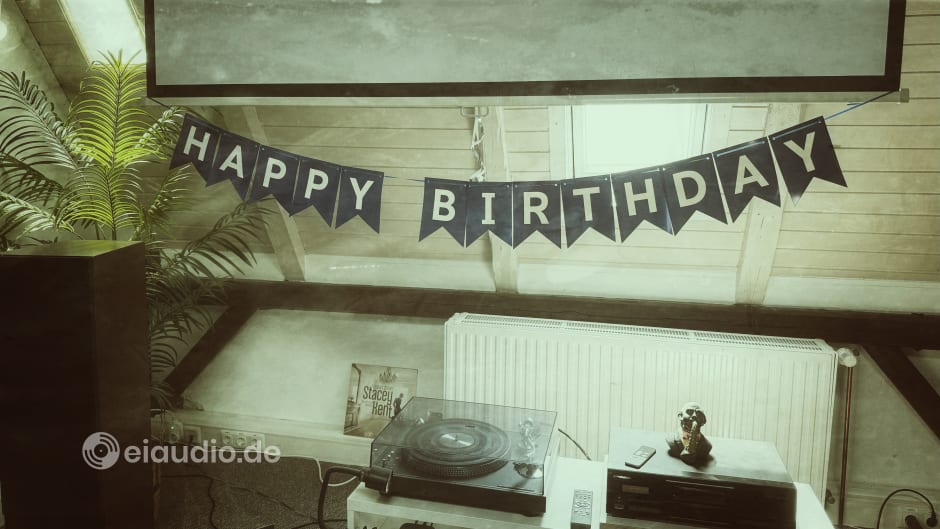
Published: 09/06/2025
Author: Karsten Hein
Category: Explorations
Tag(s): Contemporary
I am writing these lines in the week of eiaudio’s fifth anniversary and find that our world, technology, and future outlook have changed dramatically since then. Back in April 2020, citizens around the globe were experiencing government-imposed lock-downs that had been put in place to slow down the spread of the Covid-19 flu-pandemic. In order to stay in business during these restrictions, companies ended up moving vast portions of their communications and operations to cloud-based servers and online platforms, which culminated in the largest synchronous data upload in world history. With my family’s language school business closed down for several weeks and both our kids at home due to the restrictions, I wrote my first article on my smartphone. I wanted to tell the story of HiFi from the very beginning, and so I called the article: “The Power Source”.
My aim was to share what I had learned about HiFi setups and gear with like-minded enthusiasts. I wanted to document my discoveries for my own future reference in a place I could rely on, to encourage my readers to make new discoveries and trust their own ears, and also to set up an alternative platform to my family’s language school operations, which could apparently be shut down very quickly, as the German government had made clear to us. Built on a basis of truthful personal reflection, the blog was destined to become a beacon of audiophile integrity, limited only by the scope of my experience and understanding. Having such a strong basis in personal appreciation proved to be beneficial to the website’s reception, and eiaudio.de soon attracted well over 10,000 individuals each month who stuck around to read many more articles.
Today, my eiaudio blog is even more influential than shown in the numbers above. It helps people around the globe form their opinions on subjects such as HiFi setups, room acoustics, vintage gear, and listening skills. However, in many cases, the people benefiting from my articles do not really need to visit my page anymore. Instead, they ask an AI-bot like Chat GPT to collect the information for them. With most of human data and experience available online, it was only a matter of time, before someone came up with an algorithm that could drink from this extensive pool of human labour without its user having to visit the sources that feed into the pool each time. And there is more: AI bots cannot only extract information from the web but now also organise data in order to create spoken and written texts, images, and also music. The bottom line is that output once unique to us humans is henceforth subject to automation by bots, and those sharing their insights online, like myself, are feeding them for free.
As it looks now, our social stability and order, sense of purpose and justice, personal commitment and resilience, will all be tested at the same time, while AI is leading us towards completely uncharted territory at breakneck speed. Some industries will be affected by these changes sooner than others. The music industry, for instance, has already been forced to make the transformation from the High Fidelity-sound of the 1960s to 1990s (first based on vinyl and later on CD sales) via the iPod (with predominantly MP3 as its basis) to the High-Res streaming services of our time. In the face of local music abundance, due to instant worldwide availability, the formerly large budgets of music labels have shrunk dramatically and with them the incomes of the artists providing the music. With earnings from music sales at an all-time low, the price of concert tickets has skyrocketed. Those artists who do not manage to attract regular crowds mostly go empty handed.
In most modern households, High Fidelity has been reduced to the sound quality of smart speakers, and few people take the time to set up a proper HiFi system or to develop their listening skills anymore. Slowly, we are learning that information without structure and context is disinformation. Just like high-frequency noise clutters the iron core of a transformer and prevents it from working properly, the helpless attempt of today’s global brands of reaching all consumers directly via social platforms makes people withdraw from communication on many levels, unsure of what to believe anymore. There are simply too many companies and too many products for the consumer to process when these make a pitch all at once. The pendulum of globalisation has swung from the scarcity of goods and local production all the way to the abundance of goods with failing consumer demand and a general drifting towards the pointlessness of everything.
After all, what is the point of me writing reviews that are predominantly going to be read by bots and that are therefore no longer linked to my name? And what is the point of factories making products faster and faster in which the workforce has long since been replaced by robots and companies stalking communities online, trying in vain to sell products to people who have lost their jobs and no longer have the means to purchase anything? — One could argue that five years after Covid-19, the full scale of human greed and stupidity is more blatantly obvious than ever before. Although we are family and clan-based social beings and therefore utterly dependent on each other for survival, our current economic model mostly rewards those who most quickly come up with products and services that threaten and break apart the pillars of our social fabric and environment.
While eiaudio is about deep contemplation and making time for appreciation, the current trend of placing everything at our disposal at once, seemingly without the need for personal understanding and growth, is luring us down a dark alley, ill-prepared for what awaits us. I would have liked to see a deep connection to evolve between the readers of my blog (commenting section) and myself. This can still happen, of course. But with bot visits heavily on the rise, the risk of us never getting to know each other and drifting further apart as HiFi enthusiasts, families, and nations seems very real.
Best wishes,
Karsten
NDHT Norddeutsche HiFi-Tage 2025
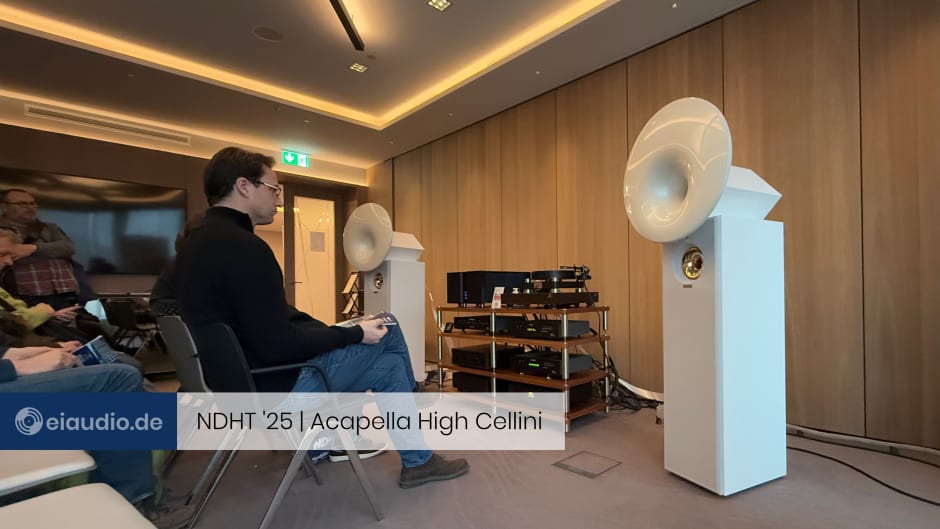
Published: 03/02/2025
Author: Karsten Hein
Category: Explorations
Tag(s): Norddeutsche HiFi-Tage
A Report on Germany's Premier Audio Show
With the HIGH END trade fair relocating to Vienna in 2026, the Norddeutsche HiFi-Tage (NDHT) will become the most significant audio show for the industry in Germany. Each year, hundreds of famous brands in HiFi flock to Hamburg to display their latest product innovations. This year, the fair was hosted by the Le Meridien hotel, located at the Inner Alster, a famous lake in Hamburg's inner city. Below are some key highlights and impressions of my time at the show.
Sieveking Sound (Marten)
The picture shows Jan Sieveking, the founder of the Bremen-based High End retailer by the same name, presenting assorted HiFi gear and audiophile music with heart-felt passion. Because loudspeakers present a clear practical challenge for many home systems—balancing both functionality and the now-infamous Wife Acceptance Factor (W.A.F.)—I decided to keep my focus on them this year. In doing so, I simply assumed that the equipment driving them had been chosen wisely.
As I walked into the room, a pair of Swedish Marten “Parker Quintet” loudspeakers were playing a Leonard Cohen album from vinyl. The setup fit the room well. The music sounded tonally balanced, and the vinyl track revealed a soft and becoming treble. There was natural flow and rhythm to the sound. This, however, changed when we transitioned to a digital source. The treble became overly crisp, and I could not help but focus on the harshness of the tweeters. The rhythm seemed more mechanically driven and the natural flow was replaced by a more fragmented impression. I left the room with the positive memory of the vinyl experience in which the acoustic capabilities of the Martens had managed to shine through. However, the experience again reminded me how fragile the balance can be on modern ultra-precise HiFi setups.
Marten Parker Quintet Specifications
- Type: 2.5-way floor standing speaker
- Frequency range (+/-2dB): 24-40000 Hz
- Power rating (RMS): 350 W (max.)
- Power sensitivity: 93 dB/2.83 V
- Impedance: 4 ohms (2.7 Ohms, min.)
- Crossover frequency: 2200 Hz
- Terminals: Single-wiring, WBT Nextgen
- Internal wiring: Jorma Design
- Cabinet: 35 mm M-board
- Finishes: Piano Walnut, Matte Walnut, Piano Black
- Stands and feet: Stainless steel with Marten Insulators
- Dimensions: (W) 24-33 cm x (H) 117 cm x (D) 54 cm
- Net weight: 60 kg (133 lbs)
Voxativ
The German Voxativ audio company is a designer and producer of High End audio gear based in Berlin. Although the company itself is still relatively young, the company’s co-founder, Dipl. Ing. Inès Adler, has a long history in the industry and is highly knowledgeable about the products she presents. As I walked into the room, I could sense that I was in for an extraordinary experience, not only due to the dazzling personality of the presenter, but also due to the perplexing appearance and sound of the loudspeakers.
The Alberich Array System is a combination of sleek-looking single-driver monitor speakers that are stacked on top of a bass module and held in position by means of a mostly invisible metal rack paired with absorbers. The monitors form an array of three full-range drivers, namely one "Hagen 2" cabinet featuring a Voxativ AF-2B driver (reaching up to 30,000 Hz) sandwiched between two "Hagen 2" cabinets equipped with Voxativ AF-1.9 drivers. An active woofer module takes over below 40 Hz. Powered by a built-in 500W class D amplifier, the sturdy Neodymium PA-Type woofer, which is a dipole (semi-open from both sides), can easily keep up with the speed of the Hagen 2 drivers.
The overall impression created by the Alberich Array System is that of a “Wall of Sound”, as described on the company website. The performance is agile, dynamic, tonally rich, and mostly entertaining and enjoyable. Obviously, some of the merits of a single-driver system are lost in the array setup, and I could not help but wonder what a single Hagen 2 monitor, perhaps paired with the Alberich bass module, would have sounded like. I decided to keep this company in mind for a future visit at the fair (or a trip to Berlin). After all, fresh ideas should be celebrated. Voxativ also offers other lines of speakers, integrated amplifiers, cables, etc.
Voxativ Alberich Array System Specifications
- Frequency response: 20 - 33.000 Hz
- Bass-module: Voxativ AC-ZB
- Monitors Hagen2: Voxativ AF-1.9 and AF-2B
- Power rating (RMS): 50 W
- Power sensitivity: 101 dB
- Dimensions: (W) 20,5 cm x (H) 180 cm x (D) 25 cm
- Colors: Berlin Black, Pure Metal
- Weight: 75 / 150kg
Reichmann Audio (Magnepan)
Reichmann AudioSysteme is a High End audio retailer based in the German Black Forest region and a declared specialist shop for the brands Magnepan, Musical Fidelity, Music Hall, Rekkord and Triangle. Each year, the company brings along a small selection of sophisticated audio gear to caress the ears of the visitors to the fair. While I was a little disappointed by their Musical Fidelity and Triangle setup at the Steigenberger hotel in 2024, this year’s setup and positioning fit the room much better and resulted in a cleaner and faster sound.
This was also the first time that I had a chance to listen to a set of magnetostatic loudspeakers. The Magnepan 2.7i are flat panel speakers using a single magnetic foil to generate all frequencies across the band. Next to electrostatic speakers (such as the American Martin Logan and the Dutch Final) the magneplanar technology promises excellent transient response without phase shifts and lags in response time common to speakers using multiple dynamic drivers.
I was generally pleased with the sound of the setup, although some of the challenges of working with magneto-static speakers also came through. For one thing, the noise floor at a trade fair is relatively high at around 40-50 dB. Magnepan speakers excel in detail retrieval, a strength that is somewhat lost at the fair. Magnepan speakers are most tonally balanced at medium volumes where bass excursion is less pronounced. The volume levels at the fair therefore blurred some of the intrinsic strengths and made the Magnepan seem less dynamic than they would be in a home setup.
Finally, Magnepan speakers produce a relatively narrow sound field which is great when you are having to deal with side wall reflections but not so great when it comes to listening to music well outside the sweet spot. As the Reichmann booth was generally well-attended, I did not manage to sit in the center and therefore mostly heard one channel of the stereo setup. However, this does not mean that I think less highly of them following the experience. Owning a set of Martin Logan electrostatic speakers myself, I do understand that everything is a compromise and still have Maggies on my list of highly attractive speakers to own. Good to know: Magnepan speakers are surprisingly affordable for their performance.
Magnepan 2.7i Specifications
- Type: 3-way, full-range, quasi-ribbon
- Frequency response (+/- 3dB): 40 - 30,000 Hz
- Power requirement: a beefy high-current amp
- Power sensitivity (500 Hz): 86dB
- Impedance: 4 Ohm
- Dimensions: (H)180 cm × (W)56 cm × (D)4.4 cm
- Weight: 21.8–23.6 kg
Auer Acoustics
Located just north of the Chiemsee region in southern Bavaria, Robert Auer manufactures High End speakers “Made in Germany” by master carpenters in his local factory. His passion for wood and quality materials also extends to the trade fair booth, which is fully treated with absorber panels and diffusers along the primary reflection points.
The speakers on display were Versura V_4, large floor-standing models with a narrow front and additional side woofers. I greatly enjoyed the atmosphere and dynamics in the room and also overheard conversations in which the overall sound quality was highly praised. To my own ears, the treble and upper midrange sounded a bit analytical, very similar to the Marten experience described above. It is well possible that the impression was caused by the electronics driving the speakers.
Looking at the impedance curve and sensitivity, the Versura V_4 should be easy to drive, even with a small tube amplifier. And I think this would have been more fun and intimate to listen to than the beefy electronics required for the demonstration at the fair. I therefore made a mental note to listen to them again on the next occasion.
Auer Acoustics Versura V_4 Specifications
- Type: 3.5-way floor-standing speaker
- Power sensitivity: 90 dB
- Power requirements: from 20 WPC
- Nominal impedance: 8 Ohms
- Lower cut-off frequency (+/- 3 dB): 20 Hz
- Upper cut-off frequency (+/- 3 dB): 40 kHz
- Tweeter (Beryllium dome): 34 mm
- Midrange driver: 12 cm
- Bass-to-midrange driver: 18 cm
- Woofer: 32 cm
- Weight: 98 kg
- Dimensions: (H)1.191 m, (W)22 cm, (D)46 cm
- Connections: Bi-Wiring (optional)
Canton
Canton, Europe's largest manufacturer of HiFi and High End audio systems, is based in a small town not too far from Frankfurt am Main. In fact, when my wife Sabina and I took up our HiFi journey once again back in 2012, Canton seemed to offer a fair balance of price and performance. Looking at the photo, it is easy to see why the brand is popular among consumers. Their loudspeaker designs are clean and sophisticated looking, a design that has carefully evolved over the years.
The Reference Series has always been a staple among HiFi enthusiasts. Sadly, however, the setup was such that critical listening was not really possible. On the other hand, visitors had an opportunity to touch and feel the latest designs, to assess speaker sizes and material choices.
Acapella (High Cellini)
Acapella speakers are "from Duisburg of course, the High End capital of Germany", as Richard Rudolph half jokingly explained. I had just stepped out of the Harlekin 2 demonstration, across the hall from Symphonic Line, the other High End Duisburg brand, and was still digesting the experience. Acapella speakers feel solid in every conceivable way, but let's not start here. This section is about the High Cellini.
Horn loudspeakers can sound a little compressed in the midrange, they can be overly large, or have extremely deep cabinets that are difficult to position. Non of these characteristics were present on the High Cellini. From our multiple listening positions, the music sounded detailed, tonally rich, and very dynamic. However, as the listening room was a little too small for the speakers, vocals only began to come together and sound right along the back wall of the room where bass accentuation was becoming a bit of an issue. Such is the nature of the fare, where manufacturers need to make the best of what they are given.
Vocals aside, I was perfectly taken in and could have listened for hours on end when the High Cellini started to play back recordings of wind instruments, such as horns and trumpets. You just don't get the dynamics of wind instruments on more conventional loudspeaker designs. I left the room transfixed, hoping to hear the Cellini in a more suitable room some day soon.
Acapella High Cellini Specifications
- Type: floor-standing horn-loaded loudspeaker
- Frequency range: 25 Hz - 40,000 Hz
- Power sensitivity: 91 dB
- Bass: (2x) 10" driver
- Midrange: (1x) 1" driver hyper-spherical
- Midrange horn diameter: 620mm (wideband)
- Treble: plasma tweeter
- Impedance: 8 Ohm
- Dimensions without horn: (H)1,46 cm x (W)33 cm x (D)47.5 cm
- Dimensions with horn: (H)1.68,5 cm x (W)62 cm x (D)60.5 cm
- Weight: 120 kg
- Power handling: 100 W - 1000 W / 10 ms impulse
PMC
PMC is a British manufacturer of professional studio monitors used in the audio and video industry, as well as a manufacturer of High End audio equipment. The floor-standing Fenestria is their current High-End flagship loudspeaker, measuring 1.70 m and weighing around 80 kg, thereby coming in slightly above the ideal BMI of a human male of this height.
Visually, the Fenestria will appeal to technically minded people and young entrepreneurs who wish to boast of their financial success. But, unless they are driven at high volumes—which they are perfectly capable of—this is not how they sound. Their resonance free design makes them both precise and tonally appealing to the ears. The 2.4 m advanced transmission line design makes their bass performance natural and incredibly extended. The sound remains natural and fluid, even at very high volumes.
PMC Fenestria Specifications
- Type: Floor-standing transmission line speaker
- Frequency Response: 23 Hz – 25,000.
- Power sensitivity: 86 dB
- Impedance: 4 Ohms.
- Crossover Frequencies: 380 Hz and 3.8 kHz.
- Low Frequency: (4x) 6.5-inch, carbon-fibre piston drivers.
- Mid Frequency: 75 mm rear-chambered, soft-dome driver
- High Frequency: 19.5 mm soft-dome, ferrofluid-cooled driver
- Advanced Transmission Line (ATL™): (2x) 2.4-meter
- Dimensions: (H) 1,70 cm; Width: 37 cm; (D): 62.3 cm
- Weight: 80 kg, including plinth.
Ø Audio of Norway
Despite its understated name and design, the FRIGG 02 sounded anything but average to my ears. On the contrary: The modest and clean looking cabinet even supported the no-frills sound philosophy of phase coherence and tonal balance that has become the trademark of Scandinavian HiFi. Surprisingly, the speakers sounded much larger than they looked, which brings us back to the Wife Acceptance Factor.
ø-Audio also builds horn loudspeakers, such as the Icon 12 and the Verdande that I have heard audiophile friends report positively on, although I must confess that I have not yet had a chance to listen to them myself. Another company to keep an eye on, especially because it is currently expanding its international distribution network.
ø Audio FRIGG 02 Specifications
- Construction: 3-way floor-standing speaker
- Power sensitivity: 90db
- Frequency range: 29hz–30khz
- Impedance: 8 Ohms (min 3.8 Ohms)
- Tweeter: TPCD dome with DXT lens
- Midrange: 180mm hand-coated paper cone (titanium former)
- Woofer: 220mm hand-coated paper cone (titanium former)
- Bass reflex: floor-vented
- Dimensions: (H)98,5 cm x (W)21 cm x (D)34 cm
- Width including feet: 37cm
- Weight: 30 kg
Qualio Audio
Qualio from Poland has two loudspeaker models on sale which both combine high quality components from Mundorf, Jantzen Audio, SB Acoustics, WBT, etc. into highly versatile loudspeaker designs. On their website, Qualio explains that the IQ model, for example, uses a semi-closed design featuring an open-baffle treble and midrange section paired with a responsive Satori woofer within a ported cabinet.
The dipole design of the IQ model allows the music to be reflected off the listening room walls, providing a wider sweet spot and a more immersive listening experience. The ported bass cabinet can further be customized to fit small listening spaces by closing the port. From looking at the parts, such as the Mundorf AMT, I can imagine that this speaker has some potential. The music playing during our stay at the booth, however, made it difficult for me to judge its important vocal characteristics.
Qualio Audio IQ Specifications
- Type: Floor-standing, semi-open baffle
- Frequency bandwidth: 30 – 31,000 Hz
- Power efficiency: 89 dB
- Impedance: 4 Ω
- Dimensions: (H)102 cm x (W)38.5 cm x (D)31.5 cm
- Weight: 32 kg
Manger
The company was founded by Josef W. Manger, a German engineer who developed a deep interest in acoustics and how humans perceive sound. His journey into speaker development began during the 1960s. Manger was driven by a desire to create a speaker that could more accurately reproduce sound as it is perceived by the human ear, minimizing distortions and phase issues that are common in traditional driver and loudspeaker designs.
The P2 loudspeaker model makes use of Manger's W06, the latest bending wave transducer of the company. The frequency range of this driver is impressive. Here are the specifications of the driver alone:
Manger W06 Specifications (Driver Only)
- Type: Bending wave transducer
- Frequency response: 150 Hz - 40,000 Hz
- Power sensitivity: 85 dB
- Impedance: 8 Ohms
- Power handling (RMS): 50W,
- Peak power handling: 80W
- Diameter: 15.3 cm
- Mounting depth: 50 mm
- Weight: 1.2 kg
Daniela Manger, the company's CEO in the second generation, is respected within the audio engineering community for her contributions to acoustic design and her commitment to high-fidelity sound reproduction. Her personal efforts have cemented Manger Audio as a distinctive brand in high-end audio, known for its precision, engineering excellence, and steadfast commitment to the unique bending wave technology pioneered by her father.
The first time I heard the P2 loudspeakers perform was at an exhibition at the Auditorium in Münster. The room that the P2 were placed in was less than ideal for them to deliver a satisfactory performance. I spoke to Ms. Manger about my concerns, and she suggested that I could take the speakers home with me following the upcoming Hamburg fair to better understand their sound. This meant, I now had to stay at the Norddeutsche HiFi-Tage fair in Hamburg until its very end in order to take home the speakers with me.
Manger P2 Specifications
- Type: Passive 2-way floor-standing speaker
- Impedance: 8 Ohms
- Frequency range: 30 – 40,000 Hz
- Crossover frequency: 340 Hz
- Power sensitivity: 89 dB
- Sound pressure (max.): 112 dB
- Dimensions: (H)114 cm × (W)27,0 cm × (D)21,4 cm
- Weight: 33 kg
Lyravox
Jens R. Wietschorke (research and development) and Dr. Goetz von Laffert (finance & PR) teamed up in 2013 to challenge established loudspeaker concepts by merging the latest in loudspeaker driver technology and digital signal modulation with fresh compact designs that fully integrate into sleek modern households. Today, Lyravox produces seven loudspeaker models of different sizes to satisfy home entertainment needs.
The Lyravox KARLOS is a floor-standing speaker of modest dimensions that is lifted up and tilted backwards by means of a sturdy metal rack which supports the speaker from underneath and stabilizes it from behind. And although the KARLOS ranks among the company's smaller loudspeakers, it already incorporates most of its signature technology.
The midwoofer of the KARLOS 2-way design uses an ultra-stiff light-weight aluminum cone for superior detail retrieval. This is paired with an Accuton 30mm inverted ceramic dome tweeter that is coupled to a wave guide. Instead of using a passive crossover, the two drivers' transition frequencies are actively harmonized by means of a DSP. The highest frequencies are then added using an up-firing air-motion transformer (AMT). The natural effect of the AMT pointing upwards is a more immersive listening experience and a wider sweet spot.
My first listening expression was that of walking into a cinema while the film was already in progress. The music sounded as large and direct as one would expect from a cinematic experience. There was a sense of purpose and robustness to the sound that initially attracted me. However, the placement of the speakers so close to the floor and in the corners of the room made critical listening difficult. Someone's head was always in the way to cover one of the channels, and the front row seats were in the middle of the room, where bass frequencies tend to cancel out. I therefore made a mental note to give these speakers another listen when they are available in a more appropriate setting.
Lyravox KARLOS Specifications
Design and Drivers
- Configuration: 2-way system with an additional top-firing ambience tweeter.
- Midwoofer: 10-inch (26 cm) aluminum driver by ScanSpeak®, modified for enhanced performance.
- Front tweeter: 30 mm inverted ceramic dome tweeter, custom-designed by Accuton® for Lyravox.
- Ambience tweeter: Top-firing AMT (Air Motion Transformer) L50, enhancing spatial sound characteristics.
Amplification and Processing
- Amplifiers: Each speaker houses two Class D amplifiers (4th generation NCore®), delivering a total of 500 W per speaker.
- Digital Signal Processing (DSP): High-resolution DSP for precise crossover management, time alignment, and room equalization.
Inputs and Connectivity
- Analog Inputs: Balanced XLR and unbalanced RCA.
- Digital Inputs: AES/EBU (XLR), S/PDIF (coaxial RCA), and optical (Toslink).
- User Interface: Solid aluminum infrared remote control for standby, mute, volume, source selection, and sound presets.
Physical Specifications
- Dimensions: (W)40 cm x (H)70 cm x (D)18.5 cm; with stand: (W)40 cm x (H)87.5 cm x (D)37 cm
- Weight: Approximately 22 kg per speaker.
- Finish: Standard finish in Brilliant Interior White with an ultra-smooth matte coating (NCS-S 0500N). Custom colors and finishes are available upon request.
Additional Features
- Room Adaptation EQ: Integrated parametric equalizer for room-specific acoustic adjustments, ensuring optimal sound performance in various environments.
- Active/Digital Multi-Channel Amplification: Direct amplification of speaker drivers eliminates distortions and phase shifts associated with traditional passive crossovers.
- Optimized Cabinetry: Constructed from high-density fiberboard (HDF) with internal bracing and multi-component damping to minimize resonances.
The KARLOS is designed for rooms ranging from 20 to 50 square meters, offering a frequency response from 28 Hz to 28,000 Hz, depending on room acoustics. Its combination of advanced driver technology, sophisticated amplification, and meticulous cabinet design ensures a compelling and immersive listening experience.
EMT 928 (2022)
The EMT 928 is a revival of an industry classic. The original EMT 928 was a professional turntable that was introduced in 1971 by Elektromesstechnik Wilhelm H. Franz K.G. (EMT) in Germany. It was unique in EMT's lineup as their only belt-driven model and developed in collaboration with Thorens. It was actually based on the Thorens TD125. Designed for studio use, the EMT 928 featured a compact and lightweight design, making it suitable for mobile broadcasting applications.
In 2022, EMT introduced the EMT 928 II, a modern reinterpretation of the original. This updated model retains the belt-drive system—as a homage to its predecessor—but incorporates some contemporary enhancements: Notably, it features an independent battery power source, providing over 40 hours of playback while eliminating potential interference from the mains supply. The chassis is precision-machined from aluminum and rests on four decoupled, spherical feet. The 5.5 kg platter is driven by a modern 20-watt motor combined with a high-precision control loop circuit, ensuring rapid acceleration and consistent speed within tight tolerances.
I did not get a chance to listen to the turntable perform at the fair, but I was immediately taken in by its sleek design, especially when stacked on top the phono preamplifier with the same basic chassis form. What a crazy world this will be when these new High End icons will be available on the used market. That will surely be much more interesting than the devices available to budget shoppers today.
EMT 928 II Specifications
- Platter speeds: 33⅓, 45, and 78 RPM
- Wow and flutter: ±0.07% (IEC 386)
- Rumble: -85 dB (IEC 98)
- Speed-up time: 10, 12, or 20 seconds, depending on the speed
- Battery duration: 30-40 hours
- Dimensions: (W)48 cm x (D)34 cm x (H)10 cm
- Weight: 23 kg
- Output terminal: RCA, with a separate tonearm ground
- Tonearm compatibility: Prepared for EMT 9-inch
- Tonearm mounting distance: 215-245 mm
Acapella (Harlekin 2)
Solid and sophisticated are two adjectives that come to mind when I think of my listening experience with the Harlekin 2 at this fair. Capable of recreating life-like music events between your ears at any moment and volume you may desire. Acapella speakers are a rock in the ocean when it comes to a sober presentation in the midst of chaos around them, a characteristic that had me nailed to the seat for the longest time. How do they do it?
Part of it may have to do with the driver technology, with the company's experience of creating uncolored horn speakers. Perhaps it is resonance management that is at play here. Perhaps it is their origin in Duisburg, as Richard Rudolph suggested. Whatever it may be, the Harlekin 2 are surprisingly effective at making music come alive and—all considered—the speakers that I would have taken home with me, if purchasing speakers had been my mission on that day.
Acapella Harlekin 2 Specifications
- Type: 2-way vented floor-standing speaker
- Frequency Response: 20 Hz – 20,000 Hz
- Mid-woofer: 1 x 254 mm (10")
- Tweeter:1 x 43 mm (1.7") dome with hyper-spherical horn
- Crossover frequency: 2 kHz
- Sensitivity: 91 dB / 1 W / 1 m
- Impedance: 8 Ohms
- Dimensions : (H)120.5 cm x (W)29.5 cm x (D)46 cm
- Weight: Approximately 75 kg (each)
FINAL AUDIO
As I entered this particular room, I was accompanied by four gentlemen who had never heard an electrostatic speaker perform before. They walked around the tall speaker panels in disbelief and said that they very much enjoyed the sound they heard. And, personally, I had never heard the sound of a non-hybrid electrostatic speaker before. My Martin Logan speakers use a conventional dynamic woofer in a closed cabinet to kick in at the lower frequency spectrum.
I also enjoyed the sound of the FINAL 15+ speakers and was surprised how well they managed to present bass frequencies despite their obvious constraint in physical movement. They sounded agile, crisp, and punchy. What I did miss, however, was the wider scope of the Martin Logans which have a curved front panel. In this sense, the music propagated from the FINAL 15+ much like it did from the Maggies above. This is not a killer argument per se, and listening tastes do vary, but it is a difference one might want to be aware of.
FINAL AUDIO Model 15 Specifications
- Frequency Response (±3 dB): 45 Hz – 23,000 Hz
- Horizontal Dispersion: 20°
- Sensitivity: 88 dB
- Impedance: 4 ohms; 3 ohms at 20,000 Hz Dimensions:
- Panel: (H)203 cm x (W)36.6 cm, bottom / 30 cm, top
- Footplate: (L)40 cm x (W)42.9 cm
- Weight: 18 kg (each)
- Transducer: Super linear electrostatic transducer
- Recommended power: 30 to 200 WPC
- Components: Custom-made C core transformer
- Inputs: Custom 2-way binding posts
Symphonic Line
Walk into room 202 and meet the grand master of High End audio himself. Because much of what we classify as High End today has its roots with Rolf Gemein and the other founders of the High End Society. Here are the origins of the famous High End trade fair and also the origins of the Norddeutsche HiFi-Tage. Mr. Gemein recalls the Society's founding moment as an archetypal event, driven by a spirit and energy that made it clear to everyone involved that they were onto something great.
With two unpretentious-looking Symphonic Line "RG5 Reference" speakers positioned down the long left wall of the room and Rolf Gemein sitting in the opposite right corner, room 202 radiates acoustic warmth and looks inviting. The amplifier driving the speakers is a Symphonic Line "Kraftwerk MK3" that receives its signals from a Symphonic Line "La Musica MK3" CD Player. All components from the electric socket to the speakers are made by the same company and have been checked and confirmed by the man himself.
The seasoned founder of Symphonic Line selects outstanding recordings from the 1950s until today and in his calm voice explains the special moments captured by each one. The twelve seats in the room are mostly occupied during the day, and visitors often need to wait their turn before they can be seated. Looking around, I see that many visitors have their eyes closed while they are enjoying the music. I hope that none of them fall asleep and thereby unnecessarily extend the waiting time for everyone else. Music and the anecdotes around it are the focus of attention here, because the system only demands attention in those brief moments in which it thunders an unexpected attack into the room.
Görlich chassis will do this for you anytime. In combination with the air motion transformer "Belcanto MK2" they make music feel so natural and effortless that one can easily forget the speakers. Vocals are smack center stage and the instruments perfectly positioned around them, until—slam—you get a surprising salve of a drum beat that simply stuck out from the rest. Eyes open for a moment, people looking around for confirmation "Did you hear this, too?". I left the room feeling satisfied, relinquishing my seat to the next listener waiting in the corridor.
WESTLYD
A refreshingly fundamental Rock and Pop speaker design that is capable of playing loud with ease. The resulting sound signature is an interesting blend of the 1980s and our modern tastes. The sound quality, especially in the vocal spectrum and on quieter music played, is not on par with Tannoy and other more established brands, but it really does not have to be at the current price point.
Saba Wildbad 100
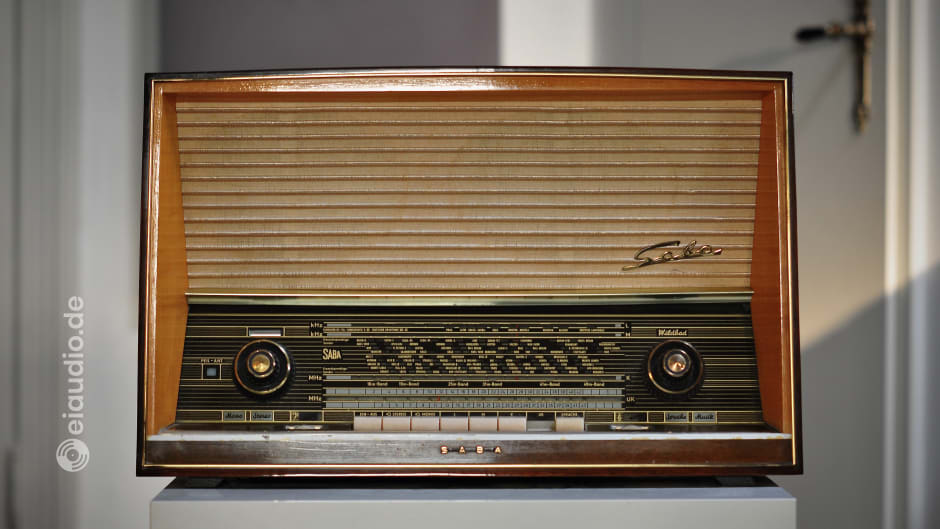
Published: 06/10/2024
Author: Karsten Hein
Category: Explorations
Tag(s): Vintage Radios
Life could have gone differently for German HiFi, if the industry had fully embraced the idea of creating icons. I love the look and feel of those early days, when anything still seemed possible, and I am thankful to my grandfather for preserving this opportunity for me well beyond his lifetime. So, Rudi, this article is for you.
The Saba Wildbad 100 valve radio, produced from 1959 to 1960, is a classic German radio model with a wooden cabinet, a horizontal station table, and large rotary dials. It operates on the superheterodyne principle and covers frequency bands from long wave (LW) and medium wave (MW) to short wave (SW) and ultra-short wave (FM). The Saba models of this period were renowned for their robust engineering, superior audio quality and meticulous craftsmanship. The Wildbad 100 is no different. It is a respectable member of the collectible vintage Saba line and is still sought after for its sonic fidelity and aesthetic appeal.
My grandfather was a lathe operator and a turner who understood craftsmanship. He was adventurous and a jack-of-all-trades who could fix almost anything in the house. A trained policeman before the war, he also had a sober view of right and wrong and would not tolerate much nonsense from anyone. When he still worked shifts in the factory, he had to plan his free time wisely. In the winter it was mainly family time, which he loved to spend with his grandchildren when we came to visit. Besides working in the garden or building things out of wood and Lego together, I remember sitting with him at dusk, watching the headlights of passing cars create wondrous shapes on the ceiling of the living room, or listening to that very same Saba radio.
Having thrown out his old music chest, my grandfather rebuilt the old Dual turntable (which it had come with) to fit into his sideboard and used his new Wildbad to amplify the sound. He did not own many records—not in the way that collectors do today—but those that he did own he played with great pleasure. His collection contained music ranging from Classical to Folk and German Schlager, but he also had German comedy shows, such as Jürgen von Manger and Emil, which we kids only half understood but somehow greatly enjoyed. Part of the charm of listening sessions with grandpa was in the shared experience, of course. But there was also another kind of warmth that I would come to miss in later years—this warmth came from vinyl as a source and from the radio itself.
Although many performances from the 50s to 80s were poorly recorded, they all possessed a warmth, richness, and sparkle that made listening a pleasure. Looking like a guitar amplifier, the Saba had a resonant wooden body that was closed enough to provide a chamber but open enough not to sound boxy or confined. Unless external speakers and an additional stereo module were present, the output remained mono, coming from a 24cm bass driver, a 24cm midrange driver, and two 10cm tweeters, mostly hidden behind a relatively thick woven fabric. The tweeters were located behind plastic grilles on either side of the cabinet. Both the bass and treble output could be attenuated to adjust the sound to suit the room’s furnishings, proximity to corners, and personal listening preferences. Whatever the setting, the tube-driven Wildbad 100 sounded sonorous and inviting.
Although the Saba Wildbad 100 does not use the now famous Saba Green Cone drivers (which are typically full-range with ALNICO magnets and are found in other models such as the Freiburg series) it does deliver lush and musky vocals and an engaging tonality with sufficient bass slam when driven at moderate living room volumes. Much like the Green Cone drivers, the Wildbad’s set of four drivers will start to sound flat, strained, and distorted when driven too hard. The 4 Watts tube amp power are just enough to reproduce the tonality and the power of a full human voice. In my opinion, it is this discipline that makes the Saba radios of this period so attractive. The Wildbad 100 produces vocals that have tangible substance and an almost forbidden allure.
Pressing the first of the eight ivory buttons on the front, the EM84 tuning indicator tube flickers into action, without the unit making a sound. As the tube warms up to the radio station with an increasingly narrowing band, the sound of the radio begins with heavy distortion, until the amplifier tubes have gathered enough substance to drive the speakers. It then takes another five minutes for the Saba to sound complete and another fifteen minutes for it to sound at its best. Soon, the heat from the tubes can be felt as a warm glow radiating above the wooden cabinet. Consider for a moment the flimsy plastic boomboxes that followed the Saba Wildbad in the 1970s and 1980s. Hardly any of them were tuned to the harmonics of the human voice. As a result, they sounded cold and lifeless by comparison.
When my mother came to visit us at the North Sea a few weeks ago, I gave her a tour of our studio as it is now set up. She listened to our Martin Logan SL3 system with the superb Symphonic Line RG9 MK5 amplifier, Thorens TD 320 turntable, and Marantz CD-17 CD player, as well as to our Tannoy XT8f system with the legendary Symphonic Line RG9 MK3 amplifier. She enjoyed the music very much and became quite emotional at times. Later, as we were sewing the Molton curtains for the listening room, I turned on the Saba Wildbad radio. After some minutes she stopped sewing, and looked up: “Is that my father’s old radio?” She wanted to know. “It’s really very good. I had no idea it could sound like that.” And even though I have gathered lots of experience in setting up systems over the years and now know how to achieve tonal balance even in a complex setup, I was still amazed at the undeniable charm that the Saba Wildbad delivers straight off the bat. Sit with it in the dark for a while, and you will understand why its charm endures.
The SABA History:
SABA is the acronym of Schwarzwälder Apparate-Bau-Anstalt, a privately owned company founded in 1923 in Villingen, Germany, by Hermann Schultze. Initially, it produced clocks and household appliances, but soon expanded into radio technology during the 1920s and 1930s. By the 1950s, the SABA brand had become well-known for its high-quality radios and television sets and gained a reputation for excellent sound quality, especially with models like the Freiburg series that featured the famous automatic station search and high-end "green cone" speakers.
In the 1960s, SABA began producing televisions and ventured into consumer electronics. However, increased competition from international companies during the 1970s affected its financial stability. The company was eventually acquired by the French Thomson-Brandt group in 1980, which marked the end of its independence. Despite this, the SABA brand persisted in various forms, especially in the TV market and under Thomson's ownership. SABA remains a nostalgic brand, which is admired for its craftsmanship in radio and audio technologies, particularly during its mid-20th-century heyday.
Technical Specifications:
- Type: Post-World War II tube radio
- Power consumption (max.): 70 Watt
- Power supply: 110V, 125V, 150V, 220V AC
- Amplifier output (max.): 4 watts
- Loudspeakers: 2x 10 cm (round), 2x 24 cm (oval)
- Cabinet finish: wood, glossy walnut finish
- Dimensions: (W) 592 mm x (H) 375 mm x (D) 255 mm (23.3 in x 14.8 in x 10.1 in)
- Weight: 11 kg (24 lbs)
- Country of manufacture: Germany
- Year(s): 1959 - 1960
Tubes (Valves) Used:
- ECC85 (FM frequency converter)
- ECH81 (AM frequency converter)
- EF89 (Intermediate frequency amplifier)
- EABC80 (Detector and audio pre-amplifier)
- EL84 (Power amplifier)
- EM84 (Tuning indicator)
High End Society

Published: 01/06/2024
Author: Karsten Hein
Category: Explorations
Tag(s): High End Society Germany
HiFi (High Fidelity) devices of superior musical quality have been referred to as "High End" since the early 1980s. And with Rolf Gemein's Symphonic Line RG9-MK3 tonally capable integrated amplifier, eiaudio has also found its entry to the subject of High End. Rolf Gemein was among those who helped to establish the term and was also among the founders of the High End Society, an association with a long history and tradition.
What is known as the High End Society e.V. today was founded on 18 December 1981 as an interest and advocacy group under the name "High End Interessengemeinschaft für hochwertige Musikwiedergabe e.V." in a small hotel in Alzenau, Bavaria. The initiator of this first meeting was Dipl.-Ing. Klaus Renner from Munich, who was at the time undertaking preparations for his new audio magazine "Das Ohr". In his eyes, conscious listening (an audiophile pastime activity for the experience of the joy of sound) deserved a much higher status than it was given by the predominantly mixed audio/video consumer trade fairs. A separate trade fair especially made for the High End audio sector was to rectify this situation. The twelve founding members of this interest group were:
High End Inaugural Meeting
(Frankfurt am Main, 10 December 1982)
- Klaus Renner, "Das Ohr" magazine (Munich)
- Christina Puschmann (now Ishizuka ), P.I.A. HiFi-Vertriebs GmbH (Mörfelden-Walldorf)
- Dieter Burmester, Burmester Audiosysteme (Berlin)
- Kurt Wolfram Hecker, Kurt Hecker GmbH (Frankfurt am Main)
- Rolf Gemein, Vernissage Laboratorium (Duisburg)
- Branco Glisovic, Pirol Audio Systeme (Böblingen)
- Jochen Rebmann, Taurus/Clear Audio (Nürtingen)
- Hermann Hoffmann, Audio Int'l GmbH (Frankfurt am Main)
- Werner Schmitt, AVP GmbH (Hanau)
- Helmut Püllmanns, Püllmanns GmbH (Cologne)
- Dusan Klimo, D. Klimo GmbH (Reutlingen)
- Thomas Deyerling, Audio Arts (Frankfurt am Main)
1982 - The first High End Audio Fair is held at the Intercontinental Hotel in Düsseldorf. The trade fair opens its doors from 19 - 26 August and already manages to attract a large number of visitors.
1983 - The High End Audio Fair relocates to the more spacious Kempinski Grand Hotel Gravenbruch in Neu Isenburg, near Frankfurt am Main. This hotel offers more space than the Intercontinental, suitable for the growing number of presenters and visitors.
1990 - The name is changed from the rather complex High End Interessengemeinschaft für hochwertige Musikwiedergabe e.V. to the more internationally recognisable "High End Society e.V."
1995 - The "High End Society GmbH" is founded to build the much needed framework for the growing operative side of the business.
2003 - Founding of the new "High End Society Marketing GmbH" for the professional organisation and coordination of the trade fair, attributable to the persistent rise in membership and visitor numbers.
2004 - Relocation of the High End audio fair to the more versatile MOC exhibition centre in Munich's Freimann district. This move is again a result of the increased need for space. However, the new venue cannot quite hold a candle to the former Neu Isenburg Kempinski Hotel, neither in terms of its central geographical location nor its more general ambience.
2014 - Renaming of High End Society Marketing GmbH as "High End Society Service GmbH" to better reflect the broader scope of services rendered.
2019 - Sees a further expansion of the range of services: For instance, the newly formed “SoundsClever" label aims to make High End listening pleasures affordable to audiophile beginners, despite a general trend towards rising prices in the industry. To make this possible, ready-to-play HiFi packages are offered at attractive set-prices of around EUR 5,000 and this with some genuine High End qualities.
2022 - Start of the IPS (International Parts und Supply) section, a fair-in-the-fair venue for Original Equipment Manufacturers in the audio industry. In the meantime, the Munich High End has advanced into the world's most significant trade fair of its kind, with around 20,000 visitors and 800 brands from 450 exhibitors representing 40 different nations.
Source: Uwe Mehlhaff, "Hörerlebnis" - Das Magazin für High Fidelity, 2022
NDHT Norddeutsche HiFi-Tage 2024
Published: 06/02/2024
Author: Karsten Hein
Category: Explorations
Tag(s): Norddeutsche HiFi-Tage
The Norddeutsche HiFi-Tage 2024 (or NDHT) were hosted by the Steigenberger Hotel in Treudelberg on the outskirts of Hamburg. There were approximately 200 exhibitors listed for the event, many of whom were still unfamiliar to me. Having begun my Explorations in Audio based mostly on vintage gear, I felt it was high time to make some new discoveries and broaden my horizon by including contemporary brands.
In preparation for the fair, I ran some web searches and took notes on each exhibitor. I packed a suitcase that contained eiaudio.de business cards, printouts of the visitors statistics to the eiaudio weblog (which had recently risen to over 12,500 visits per month), two Boogie Woogie CDs by Jörg Hegemann, my trusted Macbook, and some nose spray. The latter was just in case the combination of dry air and loud music would prove to have adverse effects on my already strained vocal cords.
Although I arrived only a few minutes after the official opening of the fair at 10:00 AM, the Steigenberger hotel parking lot was already fully occupied. I had to circle around the block and was lucky to secure a semi-legal slot adjacent to a longer line of parking lots where I was not in anyone’s way. Just in case, I walked up to the house on which I touched the driveway with two tires and left my mobile number with the young gentleman who opened the door.
I would have preferred the parking situation to be organized better. There were clearly large open spaces on the hotel premises that had not (or not yet) been made available to visitors. Being waved on by helpless parking attendants did not make for a positive first impression and was also a contradiction to hotel’s website information for drivers which stated quite clearly that there was sufficient parking available on site.
I ended up walking towards the hotel with droves of visitors that were exchanging stories about where they had managed to secure a spot for their vehicles. Some suggested that the traffic police had been quite unforgiving in the years before, on occasion charging parking offenders not only with a hefty fine but also with the cost of repairing the stretch of damaged lawn under the respective vehicle’s tires. I could well imagine that such proceedings had led to lasting memories for some of the guests.
I was a bit nervous about the event, too. Ever since we had our children, some ten years earlier, we tended to spend much of our free time among ourselves, and us going out to visit events had become the exception rather than the rule. This gradual weaning off sometimes became obvious when confronted with small things, such as the price for leaving my coat at the wardrobe having doubled in the meantime. You might therefore imagine my utter disbelief when I was first confronted with the recommended retail prices of modern HiFi gear — not just at the higher end of the market. It seemed to me that sporting five digit figures for a minimal home setup had meanwhile become quite usual.
I began my walk around the show at the Dynaudio booth and was pleasantly surprised by the setup I found. The renowned Danish loudspeaker manufacturer shared its booth with Canadian HiFi gear maker SIMAudio, and the presentation was clean and sophisticated throughout. Étienne of SIMAudio France explained to me that this impression might be due to the two companies manufacturing all their components from scratch. By doing so, they could combine technical functionality and visual design in a meaningful way, a philosophy that included the product the presentation.
Étienne directed me to a listening demonstration in which a pair of Contour 30i were positioned with plenty of space to the front and side walls and driven by SIMAudio gear. The room was of appropriate size for the speakers, and in combination made for a well-refined experience. The classical music tracks revealed a wonderful harmonically rich midrange and only on occasion gave away the position or moderate size of the speakers. Tonal memory is an elusive beast, but here I was listening to the same reassuring sound that I remembered from many earlier experiences with the brand. I gave Étienne my card, thanked him for the experience and went on my way.
The next room down the hall displayed a Musical Fidelity system that was hooked up to floor standing speakers by what looked like the French manufacturer Triangle, although I could not find the exact model on Triangle’s website. During the brief introduction that followed, we were informed about Musical Fidelity’s special approach to amplification, which consisted of two amplifiers working together to fully execute the positive and the negative curve of a music signal rather than killing the back signal through a high damping factor. According to the presenter, this made for a less constrained and more life-like listening experience.
Looking around the room, my eyes rested on the A1 integrated amplifier. I ran my hand across its heatsink top and was instantly reminded of how hot these units get. What an impressive little machine this was. Sadly, the music demonstration that followed did not support the theory presented on this occasion. Instead of a life-like presentation, the Triangles sounded boomy and imprecise. Seeing that the speakers were mounted on (metal?) slabs that had been placed on top of a long floor carpet, I suspected that this setup was the culprit. All the bass driver energy was possibly causing the speakers to wobble.
As there were sets of Magnepan speakers on the right hand side of the room, I would have much preferred to give the Maggies a listen, especially because I have not yet had a set on this blog. It was well possible that the magnetostats would have worked better on the wobbly slabs than dynamic drivers. However, as there was no indication that a change of speakers would soon take place, I decided to make my way to the next booth. Fun fact: Musical Fidelity changed owners in 2018 when its original founder Michaelson sold the company to Lichtenegger (of ProJect, amongst others).
Walking past reception, I saw a lineup of German Transrotor turntables on display. I must confess that I have always been a silent fan of their massive designs. Touching the drive belt, I was shocked that it felt as fragile as an ordinary household rubber band. I was pleased to see that the unconventional shape of the Transrotor turntables also managed to turn heads among the few female visitors present. In HiFi this usually says something, and I was once again reminded of my wife’s flattering reception of the DQ10.
The next room introduced me to a setup by Audio Reference, a German distributer for a handful of selected HiFi brands. I must say that, despite my prior research, it proved to be difficult to understand who was responsible for displaying what at each booth. And there was little space or time to talk to professionals, because everyone seemed quite busy. The speakers on this day were made by Perlisten Audio from Wisconsin, and we were either listening to a D’Agostino integrated amplifier that was run via a StromTank battery supply or a D’Agostino preamp with Krell power amplifier underneath. Either way, there was a slight edginess to the treble coming from this ensemble that I did not much care for.
In addition, Audio Reference had set their system(s) up diagonally to the room, which is a valid option to mediate modes in a difficult room. However, the measure also took some of the natural agility and attack out of the bass frequencies. Looking at their website, I could see that they had such a host of well-made equipment to choose from that it must have been difficult for them to narrow the selection down to a single setup for this show. I would have been interested in addressing the treble phenomenon and learning more about the company philosophy, but with the music playing and everyone looking busy, I thought I might as well Google it. While the fair might help to increase brand awareness by confronting the visitors with products they have not yet seen or heard of, the relatively loud environment did not make it ideal for serious conversation on the subject.
Instead of moving on to the upper echelons of the High End market with brands such as Ansuz, Axxess, and Borresen that will easily sell for six digits and more, I decided to get back down to earth with some German HiFi royalty. Rolf Gemein had been designing HiFi gear since the 1970s and made a name for himself by creating systems that made real music sound real for real people. His branded Symphonic Line products had won many national and international awards over the years.
In room 326, located on the third floor and all the way at the end of the hall, I was warmly greeted by Heinz-Peter Völkel the founder of "analog-treff" Nürnberg, a contributor to the Rundfunkmuseum, owner of a record label, and a distributer for Symphonic Line. We had been put in contact by a mutual friend and already spoken on the telephone a few days before the fair. It was good to meet in person. H.P. took my card and passed it on to Rolf, and this is how we met. I sat down among the other guests to listen. The music was well-chosen, hand-made stuff recorded live at intimate venues with acoustic instruments and vocals. And yet it was not your usual High End system esoteric Vocal Jazz, but rather the true to life recordings of the 60s and 70s.
Having spent much time setting up and fine-tuning systems over these past years, in getting rid of noise sources, optimizing ground potentials, moving to symmetric power cords, etc., I was pleased to identify that the same principles had been applied to the Symphonic line setup. The loudspeakers featured 20cm baked Görlich chassis and an air-motion transformer that was custom made by Mundorf and housed in a separate and mechanically insulated box. The speakers were driven by Symphonic Line’s RG10 MK5 integrated amplifier in conjunction with the brand’s newly developed power chord. There was a superior sense of order in the music and the dimensions of music events seemed both spatially and dynamically just right for the material presented.
In fact, I was often surprised by the dynamics presented. This is one aspect in which I found the Symphonic Line system to exceed my expectations. Moments of attack came so startlingly realistic that I found myself grinning from time to time. The occasions on which the speakers showed their limitations were exceptionally few, at least from a centered position. While standing to the right or left of the room, I sometimes had the impression that there was some compression of the mid-frequencies that I had also noticed on the Dynaudio setup. This was probably caused by the speakers interacting with the room.
My next stop was with AVM. The German manufacturer presented a lineup of high-gloss silver-fronted HiFi gear and partnered with British PMC to supply the loudspeakers. The setup looked clean and elegant, however, I could not say the same for the acoustics. My trouble is that I cannot say anything positive about a system when the tonal integrity is lost. The treble sounded piercing, metallic, and overly analytical. In this state, the setup would always draw attention to itself rather than the music. Looking behind the rack, I saw that signal cables were crossing power cables etc. It was difficult to say how the components would have sounded had they been set up properly, but having just come from Symphonic Line, where the owner and developer himself had arranged the setup, the contrast could not have been starker.
The French streaming amplifier manufacturer b.audio partnered with Intrada, a speakers manufacturer from California to present their gear. Intrada uses bandpass technology to extend lower bass and the resulting sound was — different. As I had not heard of either of the two brands before, I first had to make some sense of what was causing what in this particular signal chain and sought the assistance of a sales representative. I was informed that all tone controls were off and that the onboard DSP of the b.audio unit was inactive and had not been calibrated to the room. With his information, I listened for a few minutes and came to the conclusion that bass came across like a separate music event on this system. The two integrated band passes of the Intrada speakers proceeded to send shockwaves of sub bass through the room from time to time, something that would surely appeal to bass lovers.
Eternal Arts by Dr. Burkhardt Schwäbe had a combination of tube amplifiers and tape machines on display on which the company presented studio master recordings. The speakers were dipoles of Eternal Arts’ own product line. And although I very much enjoyed the approach and speaking to Mr. Schwäbe himself, I was not overly pleased with the resulting sound of this particular setup. The top end was a bit muffled, and spatial presentation suffered as a consequence. As I have read some positive reviews of the gear itself, I suspect that the source and amplification were of high quality. I am personally not so sure about the benefit of the metal grilles in front of the speakers, although I understand that these particular speakers were designed in cooperation with Ecouton and that there is surely a good reason for everything.
Graham Audio offered a solid performance. During the second half of the day, there was a tendency among exhibitors to turn up the volume. Doors were no longer shut for the listening sessions and each room tried to drown out the noise floor coming in from the hall. Playing loud was no problem for the Grahams, however, it did present a problem to me. Trying to speak to people became more difficult, and my already strained voice was becoming coarse. The air had become quite hot and dry in many rooms. When windows were opened, the winter cold coming in at times lead to uncomfortable drafts. We were listening to the LS5/5F, and I must day that I liked the design, both, with the grille on or off. As the volume level had become quite overpowering, I could not stay in the room for long.
From the AVM booth onward I was joined by Alec and his son from Hamburg. Alec had built speakers professionally for some time before moving into computer programming. Although Alec was not so deeply involved with the subject anymore, it was good to share our experiences and discuss each room when we were back in the hall. I was getting ready to go home but wanted to show Alec and his son the Symphonic Line booth before I did. I just wanted to see how their reaction would be. On the way there we passed the Polish brand of tube amplifiers fezz and marveled at their sleek and modern design.
When we reached the Symphonic Line booth, Heinz-Peter was playing music from his living room-concert series by his own label and was clearly enjoying it. Having met with him earlier, I could point out that 2dB less would be an advantage for everyone, to which he agreed, and we closed the door to the hallway. We were lucky and found three empty chairs in the centre. Alec and his son were sitting in front of me, and after just a few seconds I could see them relax in their seats. After some time, I padded Alec on the back: "So, What do you think?" "It is very good. Sounds live." Alec responded.
In the time that we were in the room, people came in, stood for a while, and left again. It seems they could not make sense of the shape of the speakers, did not recognize the brand, etc. And none of them sensed what was so spectacular about this room. People trust their eyes more than what they hear. In fact, in colloquial language use we tend to discount "I heard…" to "I saw it with my own eyes." One would think that this would be different at an audio fair, but judging from the reactions I saw at the fair, we can no longer be sure.
Having lost my voice almost completely, I said goodby to Rolf and H.P., took a whiff of nose spray and accompanied Alec and his son to the parking lot. It seemed that meanwhile further areas had been made available so that Alec had managed to secure a space on hotel premises. Approaching my own vehicle in the street, I could see that some self-proclaimed police officer had taken a pile of dog poop and placed it on the hood of my car. „Still cheaper than a fine“, I thought as I brushed it off with a stick. It seems my note with the telephone number had not satisfied everyone in the neighborhood.
I hope you enjoyed this little account of the 2024 NDHT fair. This being the first of its kind for me, I did not manage to get around to everyone. As usual, I have tried very hard to faithfully recount to the impressions I gathered. If you disagree with my findings or need help in setting up a system, let me know in the comments below. You can share the URL of this article by first clicking on the header picture and then copying the URL.
While proofreading the article for me, Landon suggested that I add a summary of my findings for quick access. And since he even wrote it for me, here it is:
Dynaudio & SIMAudio
- Clean and sophisticated setup shared between Dynaudio and SIMAudio.
- Emphasis on in-house component manufacturing for integrated design and functionality.
Musical Fidelity & Triangle Speakers
- Unique amplification approach using dual amplifiers for a more lifelike sound.
- Setup with Triangle speakers resulted in a boomy and imprecise sound, likely due to suboptimal speaker placement.
Transrotor Turntables
- Impressive designs but the drive belt felt unexpectedly fragile.
- Turntables caught the attention of a diverse audience.
Dan D'Agostino & Krell with Audio Reference
- Slight edginess to the treble in the sound presentation.
- Setup orientation in the room could have contributed to less natural bass frequencies.
Symphonic Line by Rolf Gemein
- High praise for the authenticity and dynamic sound presentation.
- The system's setup adhered to rigorous noise reduction and optimization principles.
AVM & PMC
- Clean and elegant appearance marred by piercing and overly analytical treble.
- Setup issues suspected due to cable management.
b.audio & Intrada Speakers
- Bandpass technology delivered extended lower bass, creating a distinct sound profile.
- The setup required calibration for optimal performance.
Eternal Arts by Dr. Burkhardt Schwäbe
- Tube amplifiers and tape machines provided a unique listening experience.
- Sound quality possibly affected by speaker design choices, leading to a muffled top end.
Graham Audio LS5/5F
- Solid performance, but high volume levels during the fair impacted the listening experience.
- Design and sound quality of the LS5/5F speakers were commendable.
My General Observations
- The parking situation and initial access to the event were challenging.
- Prices of modern HiFi gear were surprisingly high.
- The loud environment at the fair made serious conversations difficult.
- Personal interactions, such as the one with Heinz-Peter Völkel and Rolf Gemein, added value to the experience.
Tube Town PI18

Published: 12/05/2023
Author: Karsten Hein
Category: Explorations
Tag(s): Guitar Amplifier
Some weeks ago, Martin asked me if I could help him sell his guitar amp in Frankfurt. Having only limited experience with equipment for musicians myself, I asked him if he really thought I was the right person to contact about this.
He explained to me that he was selling an 18 watts all-tube amplifier similar to the old Marshall legends. At its heart was a generous Tube-Town board by the name of PI18. This allowed the finished amplifier to resemble the well-known Friedman "Pink Taco”.
Martin had not built the amplifier himself but rather asked Peter of Linnemann Amplifiers in Ilmenau to do the job for him. Upon Martin’s request, Peter set the amp’s board to “tight” to resemble the British sound. The 18 tube watts in combination with the 12-inch Celestion full-range driver were sufficient for an ultra-dynamic sound experience. This amp could play loud if needed. On the other hand it could be played sofly, just from changing the settings on the amp.
At over 60cm in width and 50cm in height, this was a sizeable guitar amplifier, and its 17kg of weight did serve to highlight the quality of materials and craftsmanship throughout. Nothing seemed amiss or even accidental on this amplifier. The synthetic leather finish had been applied seamlessly around its softened corners. The colour scheme was perfect.
And although I was not too happy carrying Martin’s amplifier upstairs and have not yet heard it perform myself, I can easily understand that this one deserves to find a new owner who will once again appreciate its genuine capabilities that are so much more than modern digital equipment sometimes has us believe.
Specifications
- Type: all-tube guitar amplifier
- Amplifier output power: 18 watts
- Features: FX loop (bypass)
- Tubes: 3x 12AX7 (pre), 2x EL84 (pwr)
- Tone adjustment: tri-band equalizer + gain
- Tone structure: tight (British sound)
- Sound impression: ultra-dynamic
- Resistance: 4 / 8 / 16 Ohms, adjustable
- Full range driver (12"): Celestion G12 M
- Speaker power: 65 Watt
- Frequency response: 75-5,000 Hz
- Operating voltage: 240 volts / 120 volts
- Replica: Friedman "Pink Taco"
- Dimensions: (W) 610mm, (H) 530mm, (D) 230mm
- Weight (incl. power cable): 17 kg
- Manufacturer: Peter Linnemann Amplifiers, Ilmenau
- Country of manufacture: Germany
- New price: approx. 1,400.00 EUR
- Year of manufacture: 2021
Epicure Loudspeaker Repairs
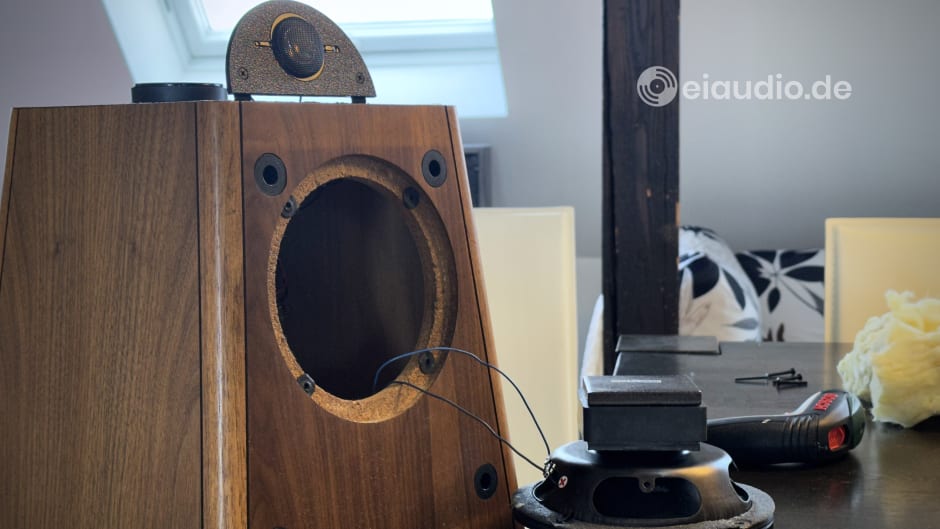
Published: 07/02/2023
Author: Karsten Hein
Category: Explorations
Tag(s): Loudspeakers
I listened to my first pair of Epicure speakers at Luigi’s house about two years ago. As Luigi was a seasoned audiophile who had provided me with many valuable insights over the years, I was a little sceptical at first to find the small and unpretentious-looking Epicure 20+ set up in the same position where his majestic Snell A3 had been before. However, I need not have worried, because these speakers sounded great despite their awkward and smallish look, or perhaps even because of this.
I kept the name 'Epicure' in positive memory, and, in early 2022, I picked up my very own pair of Epicure speakers from Würzburg in Bavaria. I did not want to buy the same model that Luigi had found for himself and was more attracted to the larger EPI 500 speakers that were also about ten years younger than the 20+ (from the 1980s rather than the 70s). Once I had the EPI 500 at our house, it took me a few weeks to learn how to position them properly. They were particularly fussy about their coupling towards the floor. In the end, I prevailed and they sounded great.
In the very beginning of listening to the EPI 500, I noticed a slight scraping of one of the midrange drivers. It was only on some frequencies and so short that I was never sure if the noise had been signal clipping or really mechanical scraping. In the end, it did not matter much, because I knew that the ferrofluid-cooled midrange drivers were still the originals and around forty years old. The driver that I suspected of scraping even smelled of burnt resin when I held my nose really close to the cone. Before each longer listening session, I would move this particular driver by hand a few times, carefully pressing down on the lower end of the cone surround. The midrange driver, being slightly corrected in trajectory, usually worked without noise for a few hours after this.
I loved the sound of these speakers, and, from personal experience, I knew that they could compete with some very pricy modern designs. Therefore, when Luigi called me up to tell me about another Epicure set on offer, I did not have to think about it very long. A pair of Epicure 3.0 was being sold in Berlin, and I knew that Luigi had initially been planning to purchase them for himself, until, finally, his wife revealed that she did not like the strange pyramid shape at all. I consequently showed the speakers to my wife, Sabina, who gave me instant approval. With all the preliminaries being settled, I only had to work out a plan on how to arrange for the transport from Berlin to Frankfurt am Main. Luckily, I had some highly supportive friends in Berlin who helped me make this possible. Enrico did a fabulous job, and I was indeed grateful.
Despite everyone’s sincere effort, one of the Epicure 3.0 tweeter’s inverse paper domes had a slight tear down its centre that was most likely from material fatigue. While the tear was never audible to me when listening to music from my usual 3 meters listening distance, I could see it expanding with each new session. This meant I now had two Epicure speakers that I enjoyed listening to a lot, but that each had a flaw which would make my pleasure short-lived and selling them later a nearly impossible task. After all, to knowingly sell broken speakers might work for some people, but it did not work for me.
Ever since my first research on Epicure speakers, I had come across the Human Speakers company in New Hampshire. At this time, it had just been an address in the USA for me, albeit, not too far from my former US home in White Plains, New York. On the Human Speakers website, I had read that Huw Powell offered parts and services for Epicure speakers. However, I did not know how old and accurate this information was, how old Huw himself was, if he could provide shipment to Germany, and if the parts were of sufficient quality and would manage to be integrated seamlessly in the otherwise pretty flawless Epicure designs. — On the other hand, I had little choice but to take the plunge and hope to end up in good hands.
I first sent Huw an e-mail to explain about my problems with the EPI 500 midrange drivers and Epicure 3.0 tweeters and ask him for advice. He informed me that he had designed replacement drivers that would blend in with the existing fixtures and crossovers in a way as to complement the original Epicure design. If there was any difference at all, he wrote, the new components sounded ‘better’. This made me a little apprehencious of what to expect, nevertheless I placed my order using my credit card and saw that there was a reservation in the amount of my purchase soon after. The drivers were built following my order and arrived at our doorstep just two weeks later. I was relieved to hold the little box of speaker parts in my hands.
I first unpacked and installed the midrange drivers on the EPI 500. Removing the original drivers was simple. I unscrewed each driver, taking care not to damage the foam surround and foam rubber insulator underneath. The wires were simply plugged in rather than soldered in place which required minimal effort from side. When screwing in the new PRO 025 driver, I noticed that the outer ring was not reinforced with a rim, as had been the case on the originals. As a consequence, the outer edges folded downward when fastening the screws. Huw suggested to stop tightening the screws right where they started to bend the chassis. However, this position gave the drivers' chassis a metallic ringing when touched. And so I tightened the screws until the ringing was deadened by the speaker cabinet.
It is possible that later EPI 500 versions had a slightly larger cutout in which the PRO 025 would have fit even better. I guess, I could have sanded the rim of the cutout before placing the new driver, but I decided that the slight bending would not matter and that I should give the EPI 500 a good listen first. I am glad that I did, because the new midrange drivers not only blended in with the original design and sound signature, they also enhanced midrange imaging and brought the whole listening experience to a new level. Reading about sonic improvements on Huw's website was one thing, but hearing this with my own ears was another. The EPI 500 still sounded tonally rich and painted wonderful natural instruments, but there now was a new sense of order in the mix that—once heard—I would not want to miss again.
Very pleased with my first repair project, I unpacked the Epicure 3.0 tweeters. The first tweeter was in good shape and was easily installed, involving only a limited amount of soldering. The original paper inverse dome tweeters had been round in shape and had stood out like protruding eyeballs. Their new replacements were semi-circles forming an arch on top of each pyramid. Although I liked the original design and would have preferred to preserve it for nostalgia sake, I could also see that the new design was a visual improvement.
To install the new tweeter, I carefully took off the plastic ring around the midrange, made note of the wiring and unplugged the driver. This gave me free access to the underside of the tweeter mount, where I could then easily loosen the screws that held both the tweeter and the o-rings for the wiring. I cut off the o-rings and soldered the replacement wires that Huw had sent into place after leading them through the two small cabinet holes that had been left empty by the original tweeter. The new PRO 002 tweeter was placed on top of the cabinet with the back of the driver plate about 40mm from the front baffle.
I could have easily replaced both tweeters within a single repair session, however, I was sad to see the second tweeter rolling out of the bubble film packaging in two parts. Without obvious damage to the packaging and also without any damage to the other parts inside, the face plate had come off on this tweeter. Looking at the parts, I first believed that we could fix the tweeter and even discussed this option with my trusted technician, but we soon learned that the face plate had been bumping against the voice coil during shipment which had led to the dome being dented inward.
I called Huw to explain what had happened, and he offered to send me a replacement for the broken tweeter. Two weeks later, a fully functional PRO 002 tweeter arrived in the mail, and the second Epicure 3.0 was finally repaired. Without having given the speakers a good listening test, yet, I can only say that the sound is a little brighter than it was before, especially with the treble adjustment on the speakers themselves set on flat. While the preferred tweeter level (0, -3, -6 dB) will depend on placement and listening distance, I have achieved good results dialling the treble down by 3 dB. The harder dome material has made the sound slightly more modern and less forgiving of poor recordings, but I will need to set up a proper test before I can report on final results.
[Listening test in progress...]
< Epicure EPI 500 | Epicure 3.0 >

Dodge Charger RT
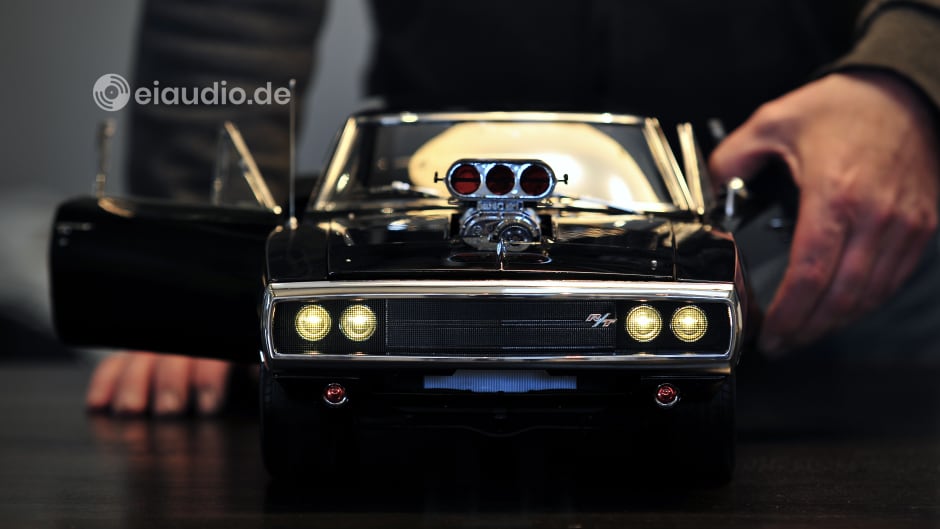
Published: 23/01/2023
Author: Karsten Hein
Category: Explorations
Tag(s): Model Kit Cars
Right about the time that I started the eiaudio website, my good friend Thomas Kubalsky began his exploration of RC cars. At first, he purchased scale 1:24 army trucks on which he modified the drive trains, but it was not long until he discovered that far more sophisticated parts were available for larger models at the scale of 1:10 and beyond. Thomas owned a range of RC cars from modified racing models with brushless motors to souped-up crawlers, and it was the modification of crawlers that fascinated him most. He enjoyed the challenge of overcoming even the most difficult obstacles in the path of each vehicle through his engineering and driving skills. His modifications included the servo motors, engine, internal wiring, the lights, engines, and drive trains. For each hour of driving, Thomas spent at least three hours fixing, improving, or upgrading broken parts or maintaining his vehicles. In many ways, Thomas’ explorations were similar to mine, in the sense that the simple joy of listening or driving had long since been replaced by the hope and drive of new discovery. On many nights, Thomas and I spoke about the current state of our explorations and about the hopes and frustrations they entailed.
The 1970 Dodge Charger R/T from the movie The Fast & Furious was an unusual build project for Thomas, one that his girlfriend had brought along from her hometown in Thuringia. As it turned out, one of her brothers had been a collector of De Agustini assembly kit models for years and had collected all the 110 weekly issues of the De Agustini magazine to which a small number of car parts were attached each time. Sadly, the brother’s health had been deteriorating, and he was no longer able to complete the extensive build himself. With Thomas having developed a reputation of excellent model building skills, Katrin had filled some large bags and boxes with the magazine issues and carried them into Thomas’ living room, until almost a quarter of the floor space was covered with the new project. At first, Thomas and Katrin started the building project together, freeing the parts from each successive issue of the magazine, reading the instructions, and discussing the best procedure. But with each issue bringing along about one hour of work, Thomas proceeded to spend many days and nights completing the project on his own.
The amount of detail in this model was staggering, and much of it resembled the real-life car. Each spark plug and drum brake needed to be wired separately. The windows could be lowered by cranking the small leavers. The dashboard was lit, and a floor pedal ignited the tail lights. The iconic blower engine could be removed in order to allow a glimpse under the engine hood, revealing the 900 bhp Hemi racing engine underneath. The fun fact relating to the Hemi engine was that—although fully functional—it was never used for actually driving the Charger in the movie scenes. It was simply too powerful for the car structure, made it unstable while driving, and was able to twist the chassis against itself along the length of the car. Therefore, instead of the Hemi, the car’s original Chrysler RB-series V-8 440 Magnum engine was used in a slightly modified version. The original Dodge had been a heavy car to begin with, and, after about 110 hours of building, Thomas found that this was also true for the De Agustini model which weighed 9.2 kg. This design was in marked contrast to Thomas’ RC projects, on which the chassis was usually designed to be of reduced weight.
When Thomas called me to report that he had completed the car for Katrin’s brother and that he was about to return it to him, I felt the strong urge to preserve this exploration and to share it with the world. I admit that model cars do not have much to do with the subject of audio exploration. However, Thomas has been a staunch supporter of the eiaudio project over the years and helped me develop best practice procedures for the sanding of turntable covers and on other occasions. This article about his own successful and impressive project was a great way to return the favour.
Specifications
Model Version:
- Type: De Agustini collectors’ assembly kit
- Number of collectors’ issues: 110
- Model type: souped-up 1970 muscle car
- Dimensions: (L) 66cm; (W): 24cm; (H) 18cm
- Finished model weight: 9.2 kg
- Assembly: by Thomas Kubalsky, Germany
- Year: 2023
Movie Version
- Type: souped-up 1960-70 muscle car
- Starred in Film(s): The Fast & Furious
- Driver: "Dom" Toretto, played by actor Vin Diesel
- Vehicle appearances: in 7 out of 9 movies
- Vehicle base: 1969 Dodge Charger R/T
- Re-modeled: resembles 1970 Dodge Charger R/T
- Film engine shown: Hemi racing engine
- Hemi engine power: 900 bhp (working film prop)
- Hemi engine boost-power: 1,100 bhp
- Booster-type: Nitrous Oxide (N.O.S.)
- Supercharger: BDS 8-71 Roots
- Real film engine: 440 Magnum (for shooting)
- Vehicle suspension: made by Hotchkis
- Headlights: made by Hedman
- Brake disks: made by Wilwood
- Fuel pump: made by Holley
- Exhaust: made by Flowmaster
- Wheels type: Cragar 200-S
- Tires: Continental Sport Contact
- Year: 2001
1970 Dodge Charger R/T
- Type: muscle car coupé (2nd generation)
- Engine code: Chrysler RB-series V-8 440 Magnum
- Engine type: 16 valve V8 big-block (longitudinal, front)
- Engine capacity: 7,2 liter
- Horse power: 375 hp / 279 kW at 4,600 rpm
- Maximum torque: 654 Nm at 3,200 rpm
- Advised top speed: 70 mph
- Transmission: 4-speed manual
- Drive train: rear wheel drive
- Front/rear brake system: 279mm drums
- Front suspension: torsion bars with stabiliser
- Rear suspension: leaf springs with stabiliser
- Dimensions: (L) 529.6cm; (W) 194.6cm; (H) 134.6cm
- Curb weight: 1,760 kg
- Fuel tank capacity: 72l
Shure 701 Pro Master for Modern PA?

Published: 13/12/2022
Author: Karsten Hein
Category: Explorations
Tag(s): Loudspeakers
When I first carried our freshly acquired Shure 701 Pro Master series speakers from their private seller near Marburg to our car, I remember thinking how unfair it was to be dragging these public address classics from one private household to another. Being in excellent condition, they well deserved to delight audiences at public venues. Back at our house in Frankfurt, I ran some tests and found that they actually had some audiophile potential, at least in the upgraded way they were presented to me, with a new crossover installed and their horn decoupled from the back wall of the speaker cabinet. And so, I proceeded with the construction of two solid wooden stands for them and enjoyed listening to them for a while. This was in June 2022, and I am happy to report that Mark Knopfler’s guitars had never sounded so good at our house.
When my brother approached me shortly before Christmas that year, asking me if I had an idea of which speakers he might recommend to solve the sound issues at the organisation he worked for, I remembered the Shures with their 102 dB of decibel output at just one watt and thought this might just be their chance to play a public venue once again. On the other hand, I did not want to sell my brother an audio solution that was not also in the interest of his employer. Frankfurt’s Gallus Zentrum was a publicly funded youth organisation that did media projects with school children and young adults. They were looking for speakers that would serve as the main sound source at video events with kids and also with the general public. Thus far, they had used a pair of smallish Canton bookshelves for this purpose, of which one had recently died and been replaced with a small JBL Control 1 Pro. Neither of the speakers was ideal for the purpose.
We decided that I would bring the speakers to the Zentrum for auditioning. My brother was kind enough to help my carry them down the many flights of stairs in our building and into the car with me. After all, twenty-six clunky kilos per speaker was an unpleasant load to be carrying alone. I had not been to the Gallus Zentrum for a long time and was happy to find it in the same industrial style design as I had last seen it. The main listening room was almost 14 meters in depth, seven meters in width, and 3,30 meters in height. There was a slightly elevated wooden stage at the front with creaking floor boards and a photo canvas perched along one side wall. The room was almost completely unfurnished, and even the few chairs present were of simple wood and without cushions. There was nothing to prevent the sound from bouncing back from the walls, floor, and ceiling, and I could see that this would lead to some issues.
We first listened to the existing loudspeakers that were driven by an Apart Audio Champ 2 amplifier. I knew this amplifier well and could see that its 200 WPC into 8 Ohms were able to provide enough power for a venue of this size. The Canton speakers had been attached near the ceiling in each of the two corners of the front wall. Jörg played a movie that had been created with the Zentrum’s young customers, and we both had trouble to understand the words that were being spoken. A combination of factors lead to this phenomenon: The source material was a non-professional recording made with non-professional actors. The bookshelf speakers did not give the sound direction. Instead, the sound waves were emitted at a wide angle and consequently bounced around the room. The Cantons being full-range speakers, the corner placement made them sound overly boomy and resonant in the room.
When Jörg turned on a second set of speakers that was connected to another amplifier and mounted on the side walls in the second half of the room, there was a small delay between the sound sources that further muffled the sound. I suggested that we try a different source material, and we switched to Simply Red’s 2005 “Cuba!” concert on YouTube. However, the sound only improved slightly and remained largely unattractive. The big question was, if the Shure 701 Pro Master would be able to improve what seemed to be a hopeless situation. To be honest, I did not know myself, because I had never before set up loudspeakers for public venues. And, considering the width of the speakers, I also understood that our options for placing them in the room were somewhat limited. After all, we did not want the Shures to get in the way of the large video projection area that required most of the front wall surface to remain empty.
My brother operated the audio/video equipment from an elevated control room that oversaw the stage area and could be reached via an old iron ladder. For the Shures to be connected to the Apart Audio amplifier, we had to run a new set of wires from the speakers to the amp. I think we were both more than a little surprised to find that our 2x 25 meter rolls would just be long enough for a permanent installation. We started our sound explorations by placing the Shure speakers at some distance to the front and side walls. They were parallel with the walls, and the resulting sound was less boomy, and high frequency reflections were similarly reduced. When sitting down on the stools in the audience, however, we both noticed that we were only able to listen to one speaker at a time with no trace of stereo-effect. There was also a slight lack of bass in many positions of the room.
When we turned the projector on, the Shures blocked part of the screen area, and we began moving them towards the side corners. Bass performance improved without being boomy or accentuated. And toeing the speakers in towards the center of the room further minimised side wall reflections. There was an unnatural squeakiness to the sound that had been even more prominent with the Cantons that was most likely the result of the bare floor, ceiling and walls, but overall, the resulting sound was much more enjoyable than before. I could now see myself attending an event at this location and reporting positively on the sound. The latter had been quite unthinkable before. And, to our surprise, adding the second pair of speakers to the equation further enhanced the sound in the room. The time delay had disappeared. Adding substance to substance, the large room was now naturally alive with music.
My brother and I ended the evening by putting the speaker cables into the available ducts along the walls and left the scene looking sophisticated and tidy. Following the weekend, Jörg showed his colleagues the resulting sound and discussed the size and usability of the speakers. Everyone agreed that this improvement to sound would raise to appreciation of the film events to a new level with students and the general public. And so it happened that my newly founded eiaudio company officially sold its first set of speakers. I was very proud of having been a part of this improvement of sound quality and also enjoy knowing that the Shures have found a new home in which they naturally belong and can perform at their best.
From the experience, I learned that loudspeakers for public address offered bass response that took into account the characteristics of large rooms and did not so easily lead to an overly bass-heavy sound. Proper PA speakers sounded at their best when driven at higher than living room volumes, simply because the materials used were more difficult to excite and more difficult to break. Horn loudspeakers were designed to minimise room reflections by channeling the sound towards the listener without this bouncing off the side walls on the way. The Shures were quality PA loudspeakers, even after all these years, that served the purpose of the Gallus Zentrum well. I wish Jörg and his team lots of success in their projects next year. May the Shures be with them.
< Watts, Sound Pressure, Decibel | Shure 701 Pro Master Review >
Sanken 2SC3519A Class A/B Amp Project

Published: 12/11/2022
Author: Karsten Hein
Category: Explorations
Tag(s): Power Amplifiers
Looking at some modern amplifier designs, one might think that the process of signal amplification is infinitely complex and requires lots of patented electronic components and integrated circuits for signal enhancement and sound shaping. It may therefore seem counter-intuitive that some of the best-sounding amplifier designs have taken the opposite approach, following a less-is-more philosophy. Audiophile listeners believe that each additional part in the signal path leads to a deterioration of the original signal. It was out of this understanding that the developer of the Sanken Class-A/B amplifier presented here started his project.
Sanken have an excellent name for building quality transistors and contributed to some legendary amplifier designs, such as the Japan-made Luxman L-10 model of 1976-1982. The Sanken 2SC3519A therefore came as a natural choice and are able to handle currents of 15 amperes and maximum operating temperatures of up to 150° centigrade, just in case the operating temperature should ever be an issue. This project's aim was to build a powerful and tonally correct linear amplifier that delivered lots of clean power with ease. An optional three-band parametric equaliser was to allow for exact tonal adjustment to accommodate the room and the loudspeakers, if doing so should become at all necessary.
The Aschaffenburg, Germany based developer was neither new to the industry nor was this his first amplifier design. On the new Class A/B design, he started out from a generous 250 VA toroidal transformer paired with high-quality capacitors as power supply. There was one amplifier board per channel with each holding four Sanken 2SC3519A transistors. In the amp's prototype version, the transistors were mounted on two overly large heat sinks that were a total of three rack slots high. While the amp itself would also have fit into a two-slot housing, starting from the larger cabinet was more practical when making last-minute changes to the design. Given the size of the heat sinks, the amplifier did not become warm, not even in combination with our 83dB low-sensitivity 4 Ohm Epicure 3.0 speakers.
11 Nov 2022 — Listening Test 1:
Turning on the Sanken Class-A/B amplifier for the first time, I immediately noticed that it provided far stronger amplification than our existing Hafler, B&W, and Dynavox power amplifiers. At 160 WPC, the Sanken was also the strongest amp in our range, offering 15 watts per channel more power than our Hafler XL280 amplifier. The Sanken’s input sensitivity was set at 1.4 volts, and its ultra-strong amplification reminded me of amplifiers from Quad which similarly appeared to be brimming with energy. Bass was exceptionally tight, and this reminded me of the H&S Exceptional tested some time ago. Indeed, the developer confirmed that the damping factor should be near 800:1. The Sanken amp provided lots of effortless control which worked well with our power-hungry Epicure 3.0.
There was lots of attack and crescendo. The music was able to free itself from the speakers better than with our Hafler amp and was thrust more deeply into the room. The resulting musical experience felt more intense and immediate. The sound was dry and, in combination with the Epicure, maintained a solid centre image. The sound was tonally rich with sufficient but not overly presented high frequency resolution. The sound was captivating and easy to listen to over long periods of time. The parametric equaliser had not yet been connected, but I did not feel the need to make any adjustments during my test.
Although I enjoyed listening to the amplifier a lot, its strong amplification served to highlight a weakness in our Dynaco PAS-4 preamplifier. Some weeks earlier, the Dynaco had begun producing a mild hissing sound. This proved to be borderline unbearable in combination with the Sanken Class-A/B amplifier, and has led me to have the Dynaco serviced. On occasion I noticed distortion that sounded like overdrive-clipping. At first, I thought that the clipping might have been present in the music, but when it appeared again, I was not so sure. And, upon restarting the amp without giving it a longer break, I noticed a recurring inner vibration that seemed to fade in and out. This might have been caused by the large transformer. But as I was not sure this was a strictly mechanical effect, I thought it best to list it here.
< Halfer XL-280 Comparison | Revised 3519 Amplifier >
Specifications
- Type: class A/B power amplifier (prototype)
- Transistors: 4x Sanken 2SC3519A per channel
- Transistor type: bipolar (BJT)
- Transformer type: toroidal, 250 VA
- Power output: 160 WPC, 8 Ohms
- Frequency range: 1-100,000 Hz (+/- 3 dB)
- Signal damping: 800:1
- Input type: cinch/RCA
- Input sensitivity: 1.4 volts
- Signal to noise ratio: (to be determined)
- Total harmonic disortion: (to be determined)
- Rise time: (to be determined)
- Slew rate: (to be determined)
- Dimensions: (W) 244mm; (H) 165mm; (D) 250mm
- Weight: 8.4 kg
- Country of origin: Germany
- Year: 2022
Tang-Band W8-2314 Project

Published: 07/11/2022
Author: Karsten Hein
Category: Explorations
Tag(s): Loudspeakers
In autumn of 2022, I was asked to take part in the development of a loudspeaker. The design had been created by a friend in the industry and was based on Tang Band’s coaxial W8-2314 driver. The Tang Band chassis used a bamboo-paper composite to create a rigid light-weight midband diaphragm and a coaxially mounted inverse dome tweeter made of an aluminum-magnesium amalgamate. Powered by a neodymium engine, the combined driver unit was capable of producing an impressively wide frequency response that ranged from a low 38 Hz to an ultra-high 40,000 Hz. Instead of being mounted inside a ported cabinet, as recommended by the producer, the W8-2314 driver was built into a cloth-dampened open baffle design and its bass cut via crossover. Its bass was supplemented by an open-baffle dipole design featuring four dynamic 28cm paper composite drivers.
3 Nov 2022 — Listening Test 1: I set the speakers up in our spacious upstairs listening room that featured irregularly slanted walls and a 4.5m heigh ceiling at its centre. Setting the open back dipole up in the exact position of our Epicure EPI 500 speakers proved to be too close to the rooms front wall. Both soundstage and mid-bass seemed overly compressed. In steps of a few centimetres I pulled the cabinets forward until the sound stage seemed right and bass was tight. At this point, the Tang Band driver was 107m from the room’s front wall. The listening triangle was at a relatively short 2m. The provisional crossover could still be adjusted in three steps, and I ended up with step 3, which was most likely the highest cut-off frequency and seemed to offer the cleanest sound.
In this setting, however, it also became apparent that the bass cabinet was still suffering from resonances that interfered with the upper bass to lower midband creating some smear in this section. At this point, there was no inner bracing to support the cabinet construction, and since the four drivers required four large holes drilled into the sides, some rigidity was lost. It was difficult for me to judge what the speakers would sound like once these resonances were eliminated. On the other hand, I enjoyed the open-baffle bass sound that seemed very natural in our listening room. I could well imagine that a central bracing might have a positive effect. Perhaps bitumen matts could be applied to quiet the cabinet. Looking at the narrow gap between the left and right facing drivers, I thought that physically connecting their magnets in the middle somehow might cancel out cabinet vibrations. It might also be possible to provide an electronic filter to cut the most relevant resonance frequencies.
[Revision in progress…]
Test system: Marantz CD-17 via HiViLux Reference SP/DIF cable on Cambridge DAC Magic 100 via HBS Silver Solid-Core Interconnect on Dynavox VR-70 via Belden 9497 in Y-wiring on the loudspeakers
Test environment: 14m x9m listening room with irregularly slanted walls and 4.5m ceiling height at its centre. Listening distances in equilateral triangle of 2m. Midrange driver to front wall distance 107cm. Resonance absorption towards the floor: 8mm high and 40mm wide steel ronde + 4mm high and 40mm wide felt cushion. Resonance-to-midrange absorption via knobbed rubber acoustic isolation pads 12mm high and 40x40mm in square.
Specifications
- Type: 3-way, open baffle
- High and mid frequencies: Tang Band type W8-2314
- Low frequencies: dipole of dynamic bass drivers
- Power handling: 150 watts RMS
- Power sensitivity: 85 dB (1W / 1m)
- Nominal resistance: 8 Ohms
- Frequency range: (?) - 40,000 Hz
Tang Band W8-2314
- Frequency range: 38 - 40,000 Hz
- Power sensitivity: 90 dB (max.)
- Power handling: 100 watts RMS
- Tweeter: 2.5cm dome, aluminum-magnesium
- Midrange driver: 20cm dynamic, bamboo fibre
- Movable mass: 23.14 grams
- Nominal impedance 4 Ohms (3.6 Ohms)
- Bass drivers: 28cm dynamic, paper compound
Cabinet Dimensions
- Bass Cabinet: (H) 700mm; (W) 250mm; (D) 368mm
- Top Cabinet: (H) 250mm; (W) 250mm; (D) 368mm
- Combined: (H) 970mm; (W) 250mm; (D) 368mm
- Country of Manufacture: Germany
- Year: 2022
Constructing a Plinth (Dual CS 721)

Published: 19/07/2022
Author: Karsten Hein
Category: Explorations
Tag(s): Turntables
Dual turntables were arguably among the best Hi-Fi devices ever made. One reason for this may have been Dual's early start in the technology, their background in precision instruments, their rootedness in steadfast Black Forest traditions, and perhaps also their geographical proximity to the fabled EMT broadcast equipment manufacturer in the Black Forest town of Lahr, about one hour’s drive from Dual’s home in St. Georgen. Dual would have been among the choices available to Elektromesstechnik engineers looking for new opportunities, and vice versa, in doing so they were cross-pollinating and adding to the expertise of both companies.
Dual’s CS 721 turntable was sold during the late 1970s and offered state-of-the-art music reproduction in combination with its standard, and by now legendary, Shure V15-III phono cartridge. The turntable offered a myriad of settings for the Hi-Fi enthusiast which made it very attractive, but basic models were somewhat reduced in terms of chassis costs, as Dual was already faced with increased price competition from Asia. For our model of the CS 721 this meant that a solid wood plinth had already given way to laminated surfaces and plastic. This was especially true for the plinth, which was arguably the weakest point of this player.
Since all the Dual’s other components were of exceptional quality, versatility, and musicality, I looked around for available plinth upgrades. However, the models I found were either not very pretty or very expensive. I was looking for a solution that would enhance the acoustics and be an understatement at the same time. And, ideally, I would be able to use all original parts in case someone wanted to build it back later. So, I decided to construct a plinth around the plastic base and to silence any vibrations with evenly spread rubber foam cushions. I would then choose feet for decoupling that combined ultra-strong support with excellent acoustic insulation. In combinaton, these enhancements should raise the Dual to the next level. At least this was my hope.
I bought solid strips of high-quality American walnut to form a frame that I cut to fit using a miter saw. My friend Thomas was available to support me in this, because getting the trim perfect proved to be a lengthy and difficult process given the semi-professional equipment we had available to us. We glued the pieces to a base board and cut a three cm notch into the back board to hold the cables. I then applied a foam rubber band along the outer edges and across the base board to support and quiet the original plinth construction. We used beeswax to finish the surfaces, as opposed to oil, and placed the Dual CS 721 inside. — Voila!
I must say that I am happy with the new design and love the sound. How do you feel about the look? Click on the header picture of this article to leave your comment below.
Specifications
- Type: Dual CS 721 plinth, and similar
- Base material: beech multi-plywood
- Side material: American walnut, waxed
- Dimensions: (W) 424mm; (D) 368mm; (H) 60mm
- Acoustic liner: 5x3mm foam rubber
- Feet: Audiocrast Tri-Ball Absorbers
Turntable Cover Restoration
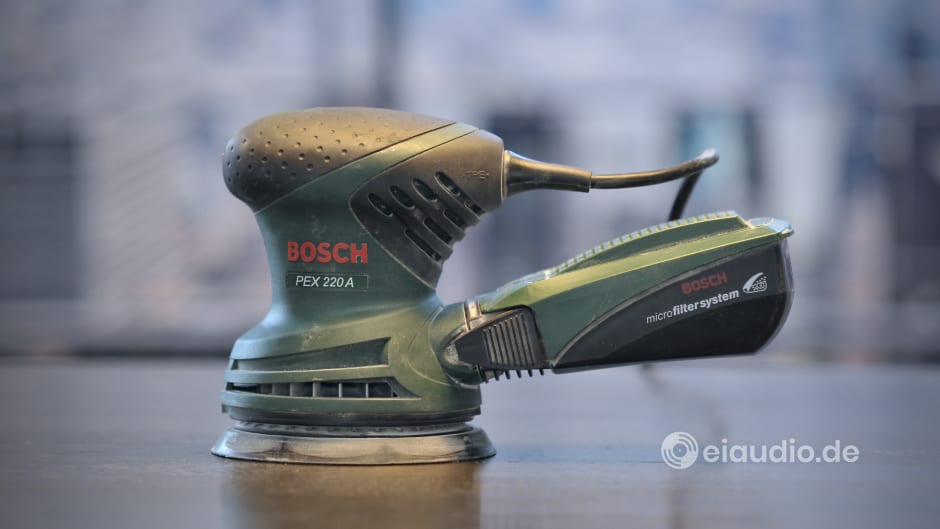
Published: 17/05/2022
Author: Karsten Hein
Category: Explorations
Tag(s): Restoration, Turntables
We might as well face it: Turntable covers have always been little more than a necessary evil. It seems that manufacturers—while suffering great pains in designing their beloved machines—were unable to think of anything more exciting than simply slapping a semi-translucent dustcover on top. And, typically, this cover was made of some easily scratched acrylic compound. For those of us searching for or selling vintage turntables these days, a scratched dustcover often meant a substantial degradation, not only in terms of attractiveness, but also in price.
Since the non-profit nature of my eiaudio testing series had made me rather price-conscious myself, I could not help but wonder just how much effort it would take to restore a scratched dustcover to its original splendour. The idea of being able to do so myself did seem attractive to the explorer in me. After all, this would enable me to take advantage of the potential price discount granted on the scratched cover, while being able to do the restoration myself. Hence, I contacted a friend, who also happened to be a specialist in automobile restoration, to help me find the best strategy for my project. Thomas was intrigued by the idea of restoring acrylic plastic and took the badly scratched dustcover of our Thorens TD 320, a turntable I had purchased some weeks earlier, to his repair shop.
Thomas returned the cover to me in mint condition just two days later and informed me which equipment I would need to purchase in order to complete this type of restoration by myself. I took note of his advice and placed my order on the same day.
Inventory Needed
- orbital sanding machine
- sanding paper, grades 240 - 3000 (240 / 320 / 400 / 600 / 800 / 1000 / 1500 / 2000 / 3000)
- orbital polishing machine
- polishing pastes in grades fine & extra fine (e.g. 3M ‘Green cap’ / 3M ‘Yellow cap’)
- one large microfibre cloth
The total tab would have set me back around 300.00 EUR, but, since we already had an orbital sander in the household, I only needed to purchase the various grades of paper and the polisher with the corresponding pastes and cloth. Thomas thankfully offered to keep me company during my first sanding attempt. On his advice, we took our little sanding project outside. This gave us cleaner air to breathe and protected our household furniture from the fine sanding dust.The dustcover to be restored was of a 1978 Dual CS 721 turntable. Next to the typical house cleaning scratches, it also showed two lines of approximately 1mm in depth and 20cm length which had most likely come from piling other items on top of the unit during its years of storage. We discussed the most appropriate choice of sanding grain and decided to start from 320. If the scratches had been any deeper, we would have probably started from grain 240 to be on the safe side.
We positioned the turntable cover on an even non-slip surface and placed the sander firmly on top of it. The speed dial was set to medium revolutions in order to keep the temperature low during the process. If the temperature became too high, the cover could easily become stained or deformed. The sander was placed on the surface with the motor turned off, and it was turned on only when securely in place. This way, there was less chance of the paper’s sharp edges accidentally cutting new scratches into the surface.
Thomas explained to me that the machine would need to evenly sand the whole surface until reaching a ‘level 320 sanding result’. (Note: Be sure to keep your fingers away from the paper edge, as this can indeed be quite sharp and easily cut into flesh.) Starting from grain level 320, the turntable cover did become opaque at an instance, and we knew that it would take some time for it to become translucent again. On the positive side, we could watch the deep scratches gradually disappear. We had peeled the Dual logo off with a screwdriver before sanding, and we made a point not to polish the edges of the small cavity where the logo had originally been placed.
Thomas insisted that we take the time to fully complete each step of the sanding process, thus working our way up from 320, to 400, and then to 600, until all the steps to 3000 had been completed. At each level, we made sure that the surface was fully restored to the level characteristic of that grain. We stayed out of the sun and took breaks to keep the material temperature low. At grain level 3000, the surface started to become translucent once again. We inspected the final result by wiping the surface with the large microfibre cloth.
Once we were happy with the sanding result, we exchanged our sander with the polisher. Thomas explained that it was best only to use small amounts of polishing paste, as this would otherwise splash about in a circle. As we had done during sanding, we turned the machine on and off while it was in contact with the turntable cover. Thomas showed me how to apply even pressure in order to achieve a uniform result over the whole surface. I saw that one small scratch we had missed in the early stages of sanding also managed to survive all the stages of further treatment. To me, this only highlighted the importance of a very thorough first sanding.
We checked the polishing result from time to time, until no further progress could be made using the '3M Green' cap paste. It was only then that we changed to the '3M Yellow' cap paste for that final high-gloss polish. Pleased with the result of our work, we found ourselves ready to tidy up the scene of the action approximately one hour after we had started. One hour’s work is probably a good estimate for anyone doing this the second or third time around. I was lucky that I had the help of my professional friend who had made sure I took the correct time and followed all the steps necessary. First time polishers would probably be best off to calculate with 2-3 hours of manual labour.
I hope you will find this account of events helpful in your own restoration project, even if it is only to help you better appreciate the prices charged by professional restorers. Do feel free to leave a personal comment below. With 'Hyvor Talk', we have recently made social engagement on this platform far easier. — Enjoy.
Hansahaus Studios Bonn

Published: 15/02/2022
Author: Karsten Hein
Category: Explorations
Tag(s): Audiophile Music
During the Corona Pandemic in 2021, the German Boogie Woogie pianist Jörg Hegemann produced a CD album that set a new audiophile standard for himself but also for the genre as a whole. And — since I had translated the liner notes for many of Jörg’s CDs — I was also among the first people to audition the new album. “Foot Tappin’ Boogie” took me by surprise, due to its sophistication of music, but also, because the recording itself carried a depth and dimension that I felt was on par with some of the great artists of this world. As an enthusiastic audiophile listener, I had sometimes spoken to Jörg about the subject of recording quality and suggested he attempt a proper studio recording, but when he finally did follow my lead, the result swept me off my feet.
Jörg explained to me that he had recorded “Foot Tappin’ Boogie” accompanied by double bass man Paul G. Ulrich and with the help of Klaus Genuit at Hansahaus Studios Bonn. Of course, the studio name and its owner did not mean much to me at the time. However, I later learned that some famous names in music had created their albums there. Among them were the American saxophonist Maceo Parker, Jazz guitarist Dean Brown, New York’s Fusion-Jazz duo the 'Brecker Brothers', as well as the German singer Pe Werner. I was delighted and congratulated Jörg for his achievement. At the same time, I felt compelled to start a web-shop connected to my eiaudio.de blog in order to sell Jörg’s “Foot Tappin’ Boogie” CD. I also invited Jörg for an interview about his life and career which I posted on YouTube. I also made a point in thanking Jörg for his contribution to audiophile music.
Some time after our interview in mid-November 2021, Jörg asked me if I felt that the audiophile community might appreciate an album that was especially dedicated to them and if I would be interested in joining him in the making of it, to which I most readily consented. Jörg suggested that he would ask double bass man Paul G. Ulrich and 'Boogie Shouter' Thomas Aufermann to join him once again. They would go back to the same studio and also rent the same legendary Steinway & Sons grand piano, hoping that Klaus Genuit would support him in the recording and mastering of the album. If all things worked out, I would have the opportunity to join the musicians on their first day in the studio and to offer my suggestions regarding the parameters of the recording. However, this is not to say that I felt at all knowledgeable in this respect.
Jörg succeeded in his planning and rented Hansahaus Studio A from Friday 11 to Sunday 13 February 2022. This would give give his team two full recording days as well as the Sunday for post-production and mastering. As had been suggested, I drove up to Bonn on the first day of the recording. I arrived at 11:30 AM and parked our car in the courtyard of the piano factory behind the studio. Looking across the parking lot, I saw that Jörg had also just arrived. We walked up a narrow steel staircase and entered the studio through the backdoor. My first sensation was one of space. I saw an acoustically sealed room to the right, a separate area for the double bass to the left, and a large central space that one would need to walk across on the way over to the grand piano that was partly separated by acoustic glass.
The large mixing console with multiple rows of channels, the rack for amplification, and the gear for processing and recording, were all in a sealed off area overlooking the whole space. I felt that this was a genuinely nice place to record an album. And Klaus Genuit understood about music. He told me that he had studied Classical Music and some Jazz, and that the 300 square meters Hansahaus was already his third studio. He had set it up during the heyday of music production, and much of the equipment was reminiscent of the generous budgets that record companies were willing to spend back in those days. Klaus explained that a studio of this size and equipment would be nearly impossible to set up by a private person having to rely on the funds available from recording these days. The time to make that kind of money from selling records had been over for a while. Klaus himself had started his career in recording on analog equipment working with large reel-to-reel decks but did feel surprisingly little nostalgia about the long forgotten struggles between man and machine.
As we were sitting back to listen to Klaus Genuit dial in his large JBL 4343 monitors for the recording, I could not help but compare their sound to the one we experience on a daily basis using our electrostatic speakers at our home. During the few occasions I had, listening in the sweet spot, I took note of the following: The JBLs were built flat into the studio’s front wall, which was angled towards the listening position. This created an impressive holographic stage with precise center image and lots of information regarding depth and width. The JBLs' paper-cone midrange drivers portrayed voices in natural tones, although they could appear thin, depending on the audio source. The way the studio was set up, the 4343 sounded a bit dry and were lacking the long decay and nuance that I was used to from our home system. Bass felt very tight and could on occasion build surprisingly at the very low end, especially towards the back of the room. This system had clearly been set up with the aim of serious production rather than celebrating the joy of listening.
My impression is that the lack of nuance and decay is a mixture of the large amount of wiring with cables touching all over, the acoustic treatments of the room, but perhaps also the result of XLR converters used on many levels. For the supervision of the recording process, the apparent lack of finesse might not mater much or even be an asset, as it pushes the sound engineer to try harder. In the end, it all boils down to the age-old discussion between the sound engineer in the studio and the audiophile at home about what matters in music reproduction. I was not going to enter this discussion, because I was indeed very happy with the final products that come out of Hansahaus Studios.
Jörg Hegemann, Paul G. Ulrich, and Thomas Aufermann had come into the studio to do business and set to work right away. They recorded nine songs for the new “High End Boogie Woogie” album on the first day. Jörg hit the keys of the grand piano so hard that he literally broke into a sweat in the process. All the restraint of cancelled performances during the Covid was finally broken for the time of the recording, and title after title found its way onto the hard drive. The second day saw the recording of a further six songs for the album, and the final day was reserved for the mastering of the album. When I last spoke to Jörg over the phone, he said that he was very pleased with the result. I think, we are both eager to hold the new “High End Boogie Woogie” in our hands, a product dedicated to audiophile listeners like us.
Speaker-Audio Demos

Published: 26/08/2021
Author: Karsten Hein
Category: Explorations
Tag(s): Speakers
What should a loudspeaker sound like? — Well, if there is a short answer to this question, it is probably this: Ideally, a loudspeaker should sound like the original audio material that is being played back on it. Meaning, the recording of a rocket-launch should sound like the rocket being launched. And the recording of a saxophonist inhaling before playing the next tune should sound exactly like a human being taking a deep breath. A loud sound requires sturdy build quality and lots of air to be moved quickly, whereas a human being inhaling deeply requires the speaker’s ability to present the tiniest nuance.
Acoustic instruments should be tonally correct with wood sounding like real wood, metal sounding like metal, glass like glass, etc. Voices should be as sweet, captivating, or even as raw as the singer’s own voice demands. Tonal correctness requires the speaker’s material resonance frequencies to be minimal and the moving mass of its drivers to be low. Natural instruments and vocals usually have at least two components: the sound that is deliberately produced and the ambient sound caused by the dimensions of the venue on the day of the recording. Both components should be presented equally well.
The speaker’s frequency band should ideally be extensive, ranging from 20 Hz to 25kHz and beyond without significantly dropping in dB volume per watt. The ability to do so assures that sounds occurring along the fringes of the spectrum are fully presented. Even if some of these frequencies fall outside of human hearing, they do affect the audible frequency band through layering and overlapping. Maximum realism can only be achieved, if no aspect of the original signal is omitted.
Much has been written on the linearity of loudspeakers. This refers to the ability to play all frequencies at equal volume. When performing in a home or studio environment, however, the linearity measured and certified in a laboratory has very little to do with the acoustic reality of a private listening room. This is why loudspeaker manufacturers take an educated guess regarding your household or studio furnishings and will accentuate frequencies that they estimate will be absorbed by your furniture and dampen those that will be enforced by your walls and ceiling.
The result of all this is that ‘speaker sound’ exists, even if loudspeakers are usually sold on the premises of being linear. But can this be shown, recorded, and archived for posterity? Well, at this point I am neither sure it is possible nor that the data produced in a recording of a loudspeaker has any value for the decision making process of which speaker to buy. But, since our project is called ‘Explorations in Audio’, I am willing to ‘explore’ the possibility. You see, explorers are naturally attracted to the unknown, especially, if they are greeted with lots of scepticism.
In this new series of explorations I am sharing with you how a given loudspeaker performed on the day of the recording in one of our listening rooms, using the recording equipment available to me at the time. The material is then uploaded to a streaming platform to be played back on any random equipment that you might have at hand: anything ranging from the built-in speaker of your mobile phone to your own High-End stereo system. The listening result is then up to you to interpret. I would be interested in reading about your findings during playback in the comments section below or under the YouTube file. — Enjoy :-)
Standard Audio Source (Type 1):
- CD-Player: Marantz CD-17
- DAC: Cambridge DacMagic 100
- Preamp: Dynaco PAS-4
- Amplifier: Hafler XL-280
Standard Recording Equipment:
- Microphones: the t.bone SC1100 (x2)
- Recorder: Zoom H4n Pro
- Mastering: Apple iMovie
Standard Measuring distances:
- Microphone to speakers: 200cm
- Music volume: 75dB (peak average at 200cm)
- Between microphones: 40cm
- Distance from ground: 100cm
- Recorder input sensitivity: 80
Dahlquist DQ10
Tannoy XT8t
Snell Type C IV
ATD Pata Acustica (Auditorium 23)
Martin Logan SL3
TEAC LS-H255-MA
Original CD Audio
The Conduit Incident

Published: 10/12/2020
Author: Karsten Hein
Category: Explorations
Tag(s): Cables
Cables on HiFi systems are known to play different roles—and therefore demand for different properties—depending on their positions in the signal chain. For instance, cables that are located near the source of the signal should ideally help to preserve both the detail and dynamics of the source material whilst maintaining a natural tonal balance, whereas cables positioned closer to the output need to uphold speed, musicality, and coherence. In order to ensure this, audiophile analog RCA/cinch interconnects positioned before the preamplifier often come without conventional shielding such as foil or mesh cover.
Manufacturers such as Kimber Kable, for instance, braid their RCA/cinch interconnects in order to minimise interference despite their lack of a conventional shield. Examples for Kimber’s braiding technique are found on their entry level ‘Tonik’, ‘PBJ’, and ‘Timbre’ cable models, all of which are great fun to play around with. The audible advantages of such concepts lie in superior transparency, speed, and dynamics. On the downside, braided cables are easily agitated by outside interference. Such interference might come in form of high or low frequency radiation or through direct induction when crossing or running parallel to other cables. Taking a peek behind most people’s HiFi racks and seeing the crossing and tangled wires, it quickly becomes clear why interference is an important factor in setting up a system. Add to this the omnipresence of WiFi & cellular communication, and it is no surprise that better wires and better positioning will often have a greater effect on sonic integrity than upgrading the units or speakers themselves. After all, most antennas are simply a short piece of wire, and even that is sufficient for airborne signals to make an impact.
Which brings me to the starting point of this exploration. One evening, after I had made some changes to the digital wiring behind our rack in order to install our second HiViLux Digital cable, sitting back in my armchair, I noticed that channel separation and imaging on our DAC had fallen to pieces. At first, I attributed this to my own tiredness, to perhaps having gotten used to the high quality of sound, but in the end the change was too abstruce to live with, and so I stuck my head behind the rack to find the culprit. From DAC to preamplifier, we are running a pair of Kimber Timbre RCA/cinch interconnects, and I saw that the two channels were touching in parallel over a distance of about 10cm. As I lifted the upper one off the one lying underneath, I noticed a change in the sound, similar to a blanket being lifted. I could already hear the difference while being bent behind the system. Hence, I fixed the new position and returned to my seat to find that what had previously been lacking had now been restored.
Following this experience, I began to wonder if it was possible to place spacers between the many cables to make sure that they neither touched nor crossed. I contacted some friends of mine who have a better understanding of electronics, but they were only familiar with the regular binders used to collect and fasten cables behind a rack. They also found it difficult to relate to my finding. One suggested it was a psycho-acoustic phenomenon, and another warned me not to believe everything I read in HiFi magazines. Unable to find professional help, I decided to explore this subject on my own. It occurred to me that the best protection for the cables would span the whole length of the wire, just like a second skin. I went online and found 2m of corrugated conduit of the variety that is used to protect cables from rodent bites in vehicles. I chose the 13mm diameter that would best fit over the cinch plugs. When it arrived in the post, I cut it into lengths of 95cm so that it was slightly shorter than the RCA/cinch interconnects. I pushed it over the whole length and secured it at both ends with black fabric tape. I then used a white marker to label the channel and the signal direction.
Before reading on, can you guess the outcome? I suspect that you cannot, simply because I had no idea myself before trying. And this is the greatest thing about exploration: our theories need to hold up in practice. Needless to say, I would have favoured a positive outcome in the lines of better imaging, greater musicality, etc., simply because I had invested money and time in this project. Unfortunately, I was not that lucky. I connected the newly constructed Kimber Timbre with conduit, and the result was a sluggish and muffled sound. Most of what makes Kimber’s braided cables special had disappeared. What had been one of my better cables had become one of my worst-sounding. After about 30min of listening, I took the conduit off and had my previous sound back.
Now, who can tell me what I did wrong? Did I somehow connect the grounds of the two RCA/cinch plugs with the corrugated plastic conduit? Did the wires running inside somehow create an electric current with the conduit? — I am leaving this exploration as a fail for now, but with my present knowledge I cannot be sure of the exact reason of failure, other than to report that it really did sound terrible.
Coincidental Cartridge Bake-Off

Published: 06/11/2020
Author: Karsten Hein
Category: Explorations
Tag(s): Cartridges
Most ideas in audiophile listening do not come over night but rather mature over time, during endless hours of listening. Usually, one thought or experience sparks another, creating a slow but continuous process of evolution. Since most steps are trial and error, victory is never certain, and just when we feel that it all sounds perfect, there is that little nagging voice that claims that we have heard nothing yet. And it is a race against time, of course. With growing experience comes growing age. The race is to hear it all before it all grows numb.
Our first record player after many years of CDs and mp3s was our grandfather’s Philips 212. We found it in the basement with a protective dust cover on top and with the original cartridge stuck in a faulty bracket meant for another record player. It seems the Philips had broken down many years earlier, and attempts of restoring it had failed. By the time we finally salvaged it in 2018, its rubber drive belt had already turned back into thick oil and was sticking dead and gooey to the floor. We ended up buying a second broken Philips 212 to restore our find.
The Philips’s original ‘GP400’ cartridge was not a great one to begin with. Given its own mechanical flaws, paired with the inherent shortcomings of the player, as well as nearly 50 years of material decay, our original impression was not exactly one of audiophile bliss. However, our inquisitive nature could not leave it at that. We first tried to improve the performance by replacing the stylus. But this had little effect, perhaps because NOS (new old stock) actually means that the replacement is also, well, old. It was not until we exchanged the GP400 with a modern Audio Technica VM95E cartridge that the Philips 212 finally came alive. Sonically, it was as if a heavy veil had been lifted. From this, record newbie as I was, I learnt that a decent cartridge will have a huge effect on performance.
Our second record player was a Lenco L75 which was built at around the same time as the Philips. On this, the original cartridge had long since been replaced by a Grado ‘Prestige Blue 2’ cartridge. Grado has a good name for cartridge quality, and the ‘Prestige Blue 2’ has very good specifications. As I later saw, indeed, much higher than the Audio Technica. Yet, somehow, I still preferred the sound of the Philips + Audio Technica to that of the Lenco L75 + Grado, a phenomenon that struck me as odd, as audiophile listeners will usually flock to the latter and disregard the first. I had no answer for this at the time.
Only recently, when moving from our Tannoy DC6T speakers up the model range to the more bass-heavy Tannoy XT8 speakers, I began to understand what it was that had troubled me: the ‘Prestige Blue 2’ on the Lenco was so silent and well-behaved that it somehow sounded dead and uninspiring to my ears. I guess it took the improved dynamics of the larger Tannoy speakers to point this out to me. So I called a friend to lend me a few Lenco-ready cartridges to try out. — Yes, some people have that sort of gear lying around the house, just in case an neighbour drops bye and needs one. LOL. — I consider myself very lucky to have made friends such as these, of course. What a luxury, to be able to try different gear before making a purchase. Thank you to Luigi and Derya for supporting me whenever I’m an audiophile in need.
The cartridges I was handed to try out where: A Satin ‘117 G’ (the white Version with the grey needle holder) and a Shure ‘M75-6S’, all pre-mounted in original Lenco head shells which I just had to fasten to the tonearm. This made changing between the cartridges quick and effortless, a plus when the aim is to compare their sound. As I have always been a fan of laid back and full sounding American gear, I began my journey with the Shure, and I immediately noticed that the M75 plays loud. At 6.2 mV, the Shure has the highest output of the three. I could feel lots of bass punch, perhaps at the expense of control over the lower frequencies. What did I care? While the audiophile in me was a bit confused, my more uncultured side loved the sheer force that was apparent from the moment of putting the needle down. The Shure made my records seem loud and showed audible noise even during silent passages, like someone accidentally brushing over a body microphone during a telco.
The music came across as voluptuous, musical, and warm. It seemed as if the Shure ‘M75-6S’ was eager to tell the whole story of the record and was having trouble taking its time. I found this aspect to be highly entertaining. While I did have to perform some basic realignments of the cartridge and even asked a Luigi to help me with the cleaning of the needle (with FLUX fluid and a special cleaning machine), it turned out that finding the right cartridge position was relatively simple. Either this, or I had been lucky. All in all, the Shure ‘M75-6S’ is an enjoyable and playful musician with lots of bass slam and musical detail at the ready. If your system-speakers-room combination is bass heavy and imprecise to begin with, stay away from the entry level vintage Shure. But if your system is rather academic or even sterile sounding, the Shure’s do-or-die approach just might add the extra excitement you need. If it were mine, I would keep it for Shure.
The second option presented to me was the Satin ‘117 G’, a former entry-level High End gem. A first listen showed great potential in the presentation of voices and the placement of instruments. However, it also revealed some inherent flaws that proved the cartridge to be beyond repair (for me, anyway). Somehow, due to age and decay, the magnetic needle holder had lost its firm grip on the needle, and the needle itself showed signs of corrosion. The combination of which lead to sibilant highs and a more general inaccuracy in the music. In my attempt to rescue the Satin cartridge, I ordered a replacement needle, but this showed similar corrosion. Even the foam around the NOS packing disintegrating upon touch, much as a vampire would when facing sunlight. Sad to have lost all hope of salvaging the cartridge, I sent the replacement needle back to the vendor and put the Satin base back in the box.
Since at this point I had not yet had the chance to experience a range of cartridges in the way I had originally intended and was feeling guilty for returning the Satin needle to the vendor in broken packaging, I decided to order a more elaborate version of the Audio Technica VM95 cartridge from the same vendor instead. This time, not in the version E for Elliptical, as we had for the Philips player, but in the more refined ML version. ML stands for Micro Linear. Two aspects should make the ML stylus superior to the simple ellipses: The nude joining of the needle directly into a hole in the shaft (instead of being soldered on as on the E), and, secondly, the more refined shape and micro-linear cutting of the needle shaft itself. The ML has been designed to pull all available information from the record and has a threefold life expectancy to the elliptical version of up to 1000 listening hours. This did sound promising, indeed. While the VM95 ML is new and will not show signs of ageing, I am aware that the VM95 is an entry level cartridge, and that its specs are not as impressive as those of the Grado, regardless of the needle quality. On the down-side are its poor channel separation of just 23 dB (Grado, 30 dB), as well as limited power generation of just 3.5mV (Shure, 6.2 mV) at peak.
From experience I know that positive technical specifications do not always translate into great musical experience. One would think that the Grado’s top frequency of 50 kHz would produce far superior sound to the Shure’s maximum of just 20 kHz, or that the Grado’s superior channel separation translates into better imaging. Yet, while our eyes are glued to the specs, our ears may come to opposite conclusions and even prefer the lower-rated device.
It was therefore not surprising that our first listening impression of the Audio Technica VM95 ML cartridge was very positive, indeed. While it had the urgency of the Shure and could indeed become loud in dynamic passages, it was very much capable of delivering nuance as well. The audio band seemed to extend further, much like that of the Grado’s, but it did so without seeming hyper-controlled or sterile. The music was full of detail and colorful. The VM95 ML offers more bass contour, showing subtle differences in the playing of bass notes. While the Shure smothered over some musical delicacy with omnipresent bass, the VM95 ML was able to present full and controlled bass, and it was painting beautiful colors at the same time. The information on the record seems to be accurately and sensibly reproduced. From my previous experience with the Audio Technica V95 cartridge on the Philips, I knew that the engine can sound a little crude at times. Perhaps this is due to a design decision and a matter of taste rather than a flaw. Both the Grado and the Shure sounded more relaxed and vinyl-like, while losing some of the joy and musical clarity on the way. I will need to give it some time for me to fully comprehend what the Audio Technica is capable of. But I can already say that even Diana Krall’s “Glad Rag Doll”, perhaps her most difficult album to play well, sounds excellent with it. This settles my decision for now.
The cartridges discussed here are:
Grado Prestige Blue 2
Sound: Ultra silent on the record, precise, academic, warm, controlled bass- Frequency Response: 10-50.000 kHz
- Channel Separation at 1KHz: 30 dB
- Input Load: 47K
- Output at 1KHz 5CM/sec.: 5mV
- Recommended Tracking Force: 1.5 g
- Stylus Type: Elliptical
- Inductance: 45 mH
- Resistance: 475 Ω
- Weight: 5.5 g
- Year: 2017 -2019
- OSP: EUR 125,00 (Germany)
- Stylus Replacement: Original, EUR 90,00
Grado Labs
4614 7th Avenue
Brooklyn, NY
11220 USA_____________________________________________
Shure M75-6S
Sound: Noisy on the record, voluptuous, musical, warm, full and sloppy bass- Frequency Response: 20 to 20,000 Hz
- Channel Separation at 1KHz: 20 dB
- Input Load:
- Output at 1KHz 5CM/sec.: 6.2mV
- Recommended Tracking Force: 2.5 grams
- Stylus Type: Spherical
- Inductance: 720 mH
- Resistance: 630 ohms
- Weight: 5.6 grams
- Year: 1972 - 1979
- OSP: DM 92,00 (Germany)
- Stylus Replacement: OEM, EUR 30,00
Shure Brothers lncorporated
1501 West Shure Drive
Arlington Heights Illinois 60004_____________________________________________
Satin M 117 G
Sound: N.N- Frequency Response: 20 to 25,000 Hz
- Channel Separation at 1KHz: 25 dB
- Input Load: 40 Ohm
- Output at 1KHz 5CM/sec.: 3mV
- Recommended Tracking Force: 1.3 grams
- Stylus Type: Elliptical
- Resistance: 50 ohms
- Weight: 9,2 grams
- Stylus Replacement: NOS, EUR 90,00 (with caution)
Shure Brothers lncorporated
1501 West Shure Drive
Arlington Heights
Illinois 60004
Interviews
Sean Keel

Published: 01/07/2024
Author: Karsten Hein
Category: Interviews
Tag(s): Musicians
In spring 2024, my friend and fellow audiophile, Arndt Scheuren, came by our house to audition some new loudspeakers and systems. For his own orientation, he brought along an audio CD by a relatively unknown artist. The album did not run for more than a minute, when we all (Arndt, myself, and our female companions) fell awkwardly silent, unable to comprehend the transformation that was taking place on our Martin Logan system. I had heard many excellent recordings on our electrostatic speakers, but this album was making all other vocal recordings seem pale in comparison.
I was immediately captivated by the high recording standard but also by the music itself. The lyrics, especially, were indeed very clever. I was so taken in that I just had to find out more about the artist Sean Keel and about the story behind his album "A Dry Scary Blue". When I saw that Sean had no more than 25 "followers" on Facebook (not that this ever meant anything), I mustered the courage to ask him for an interview. A few days later, Sean wrote back to me that he had been on the eiaudio website and was very much interested in talking to me.
At the time of the interview, Sean (who actually lives in Texas) was travelling in Colorado. He set up his MacBook in a log cabin at the bank of the Conejos river. I set up my MacBook with Open Broadcasting Studio (OBS) for the background frame and used Cisco WebEx to set up our meeting. In preparation of the interview, I tested all settings with a friend, and we ran into repeated issues with sound and video quality. It was not until the very last minute that we were able to solve most of the issues.
Here is the interview that we came up with on that day. Both of us definitely not professionals in this field, but eager to get Sean's story told and to present the album: "A Dry Scary Blue". Thank you to Arndt Scheuren of "Salon Voss — Audiophile Hair Studio, Marne" for bringing the CD. — Here goes nothing:
Sean Keel Interview
Interview Details:
- Recording: 2021, MacBook Air (M1)
- A/V Streaming: Cisco WebEx
- Composition: Open Broadcasting Studio (OBS)
- A/V Editing: CapCut
Jörg Hegemann

Published: 28/11/2021
Author: Karsten Hein
Category: Interviews
Tag(s): Musicians
About the Interview
Many years ago, I was asked to translate a CD booklet into English. It turned out that the CD was a new album by the Boogie Woogie pianist Jörg Hegemann, a music style that I had no personal connection to at the time. Over the years, I translated many of Jörg's CD booklets, but it was not until his release of "Foot Tappin' Boogie" that I could fully appreciate the genius of Jörg's music.
"Foot Tappin' Boogie" is perhaps the first audiophile Boogie Woogie album ever recorded, because of two reasons: First, the Boogie Woogie was mostly famous in the 1930s and 40s, a time when the technology to create audiophile albums was not yet available. Second, audiophile recordings depend on so many factors that they are rare in any genre, including Boogie Woogie.
What Jörg achieved thanks to the support of Klaus Genuit at Hansastudios Bonn with "Foot Tappin' Boogie" is so exceptional that I decided to invite him, to be my first guest on a series of interviews in eiaudio's "Music & Talk" section. I was a little shocked when he asked for the interview to be in German, but after spending a day-and-a-half on writing the subtitles for it, can say that I am happy with the result — even for international viewers.
I thank Jörg for stopping by and for his consent to this interview. Hopefully, this will lead many people to the discovery of this album as an audiophile gem. Because — if there is one thing that audiophiles need — it is more variety in music. Too many of us are still listening to Pink Floyd's "The Dark Side of the Moon" album and believe that it all went downhill from there. — High time to wake up and smell the coffee.
Purchase the album here and support the eiaudio-project, click here.
Jörg Hegemann Interview
Interview details
- Recorded at eiaudio.de in Frankfurt Griesheim
- Using 2x t.bone SC-1100 microphones
- On a Zoom H4n Pro recorder
- Date: 22 November 2021
